Best Places to Go On Safari In Africa
Going on an African safari is a dream for many travelers, and choosing the perfect destination can be both exciting and overwhelming. To guide you along the way, I reached out to expert travel bloggers to find their top recommendations about the best places to go on safari in Africa.
The following destinations come highly recommended by experienced travel bloggers. Their list of favorites ranges from the vast savannas of the Serengeti to gorilla trekking in the rainforests of Uganda. Whether you’re hoping to spot the Big Five or marvel at spectacular landscapes, all of these extraordinary destinations have one thing in common: you are guaranteed to have an unforgettable adventure!

On To New Adventures contains affiliate links and is a member of the Amazon Services LLC Associates program. If you make a purchase through our affiliate links, we may receive compensation from the company at no cost to you. Read our disclaimer for more information.
Our African Safari Packing Guide, based on our own African safari experience, will ensure you’re well-prepared for your dream vacation. Check it out to find answers to your questions about gear, clothing and luggage.
Read on and get ready for the adventure of a lifetime!
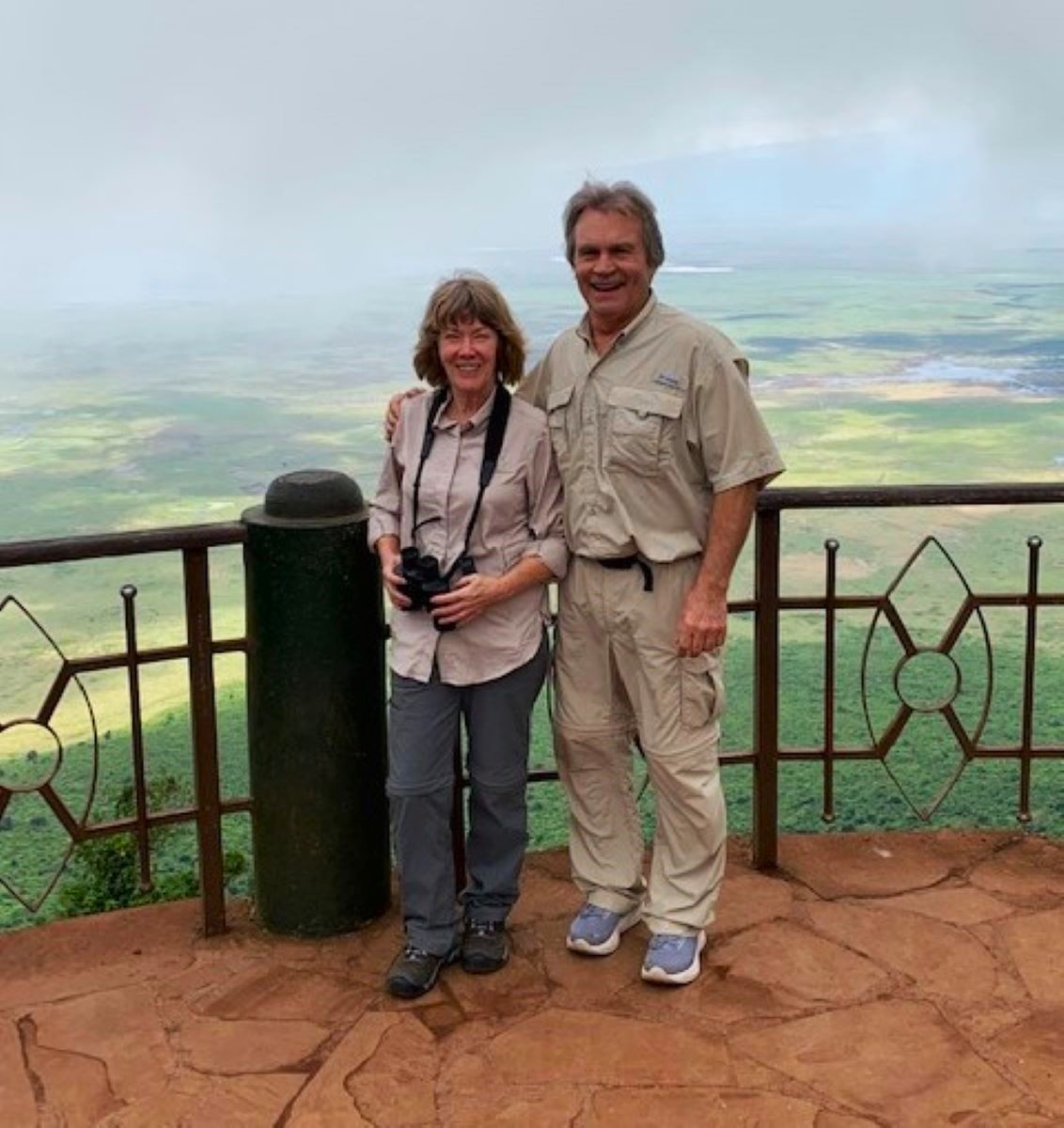
Best Places to Go On Safari In Tanzania
Arusha National Park: The Diamond Amid The Shadows Of The Giants
Recommended by Linda Egeler of On To New Adventures
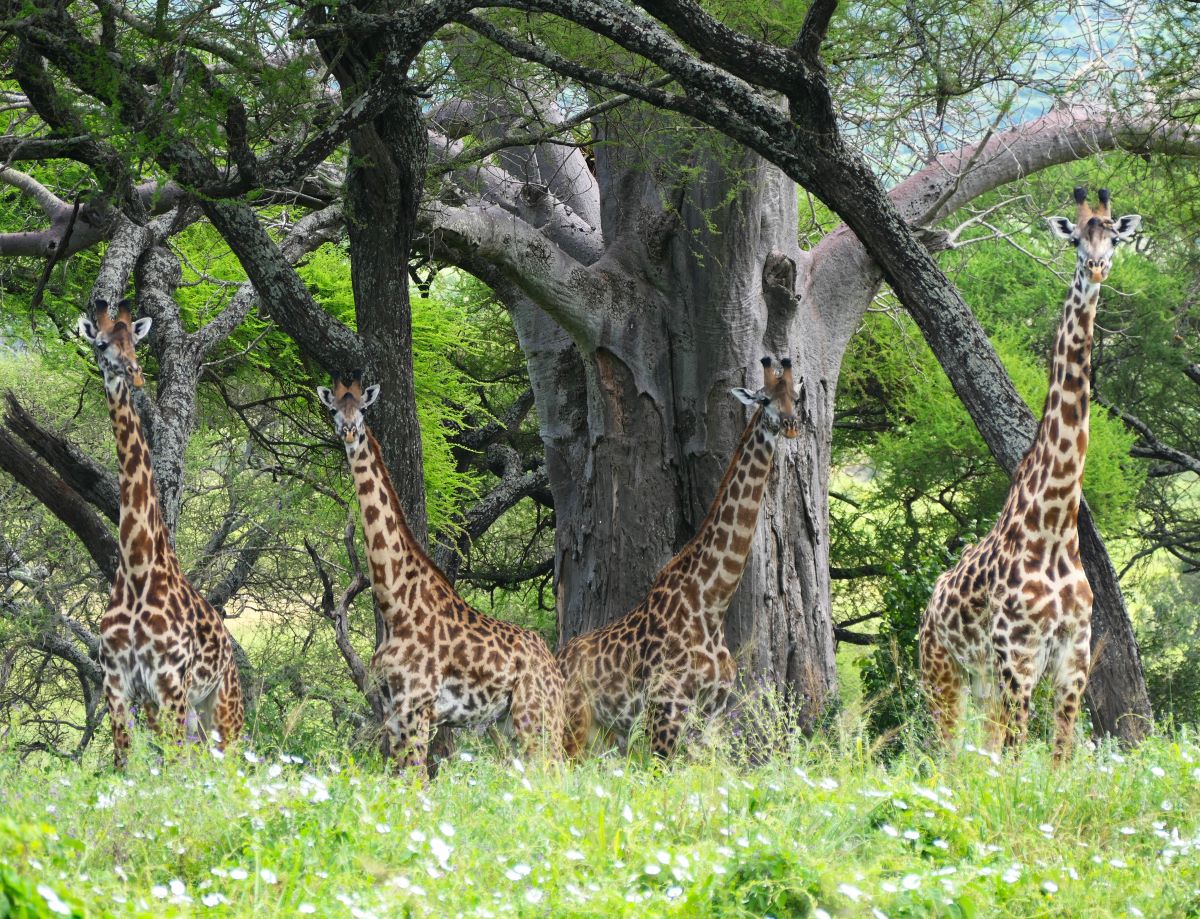
Arusha National park is the perfect starting point for an African safari. It’s close proximity to the Kilimanjaro International Airport makes it easily accessible for travelers arriving in Tanzania. It’s close enough to serve as a launching point to the Serengeti, Ngorongoro Crater, Olduvai Gorge, Lake Manyara and Tarangire.
The park’s landscape is dominated by Mount Meru, the second highest mountain in Tanzania. Arusha National Park is known for its large population of herbivores and the highest concentration of giraffes in Africa. Its also one of the best locations for spotting the black-and-white colobus monkey.
Arusha National Park was our very first stop on our very first African Safari. While I had an idea of what I might see from watching National Geographic specials, I had no idea of how I would feel as our jeep rumbled out of the brush and I caught my first sight of open grassland, filled with giraffes, zebra, warthogs and cape buffalo. Truly an overwhelming moment I will never forget.
There are not a large number of predators in the park, making Arusha the perfect place to sign up for a walking safari. This may give you your best chance to get close to both the black and white colobus monkeys and blue monkeys.
There is also a collection of lakes within the park, known as the Momella Lakes. Sign on a guided canoe trip in these shallow lakes, home to many water birds, including flamingos, pelicans, and storks. You may also spot bushbucks and hippos.
As is true for much of east Africa, the wildlife is easy to spot during the dry season between June and October. There is not as much foliage on the trees during this time of year, and many animals congregate around watering holes. However, this is peak tourist season. Prices are high and you’ll encounter many other safari jeeps in the park.
We toured Tanzania in late May, and couldn’t have been more thrilled with the beautiful weather we experienced. It wasn’t too hot, and in a 10 day trip there was only one evening downpour that lasted about 45 minutes. We certainly enjoyed the shoulder-season prices!
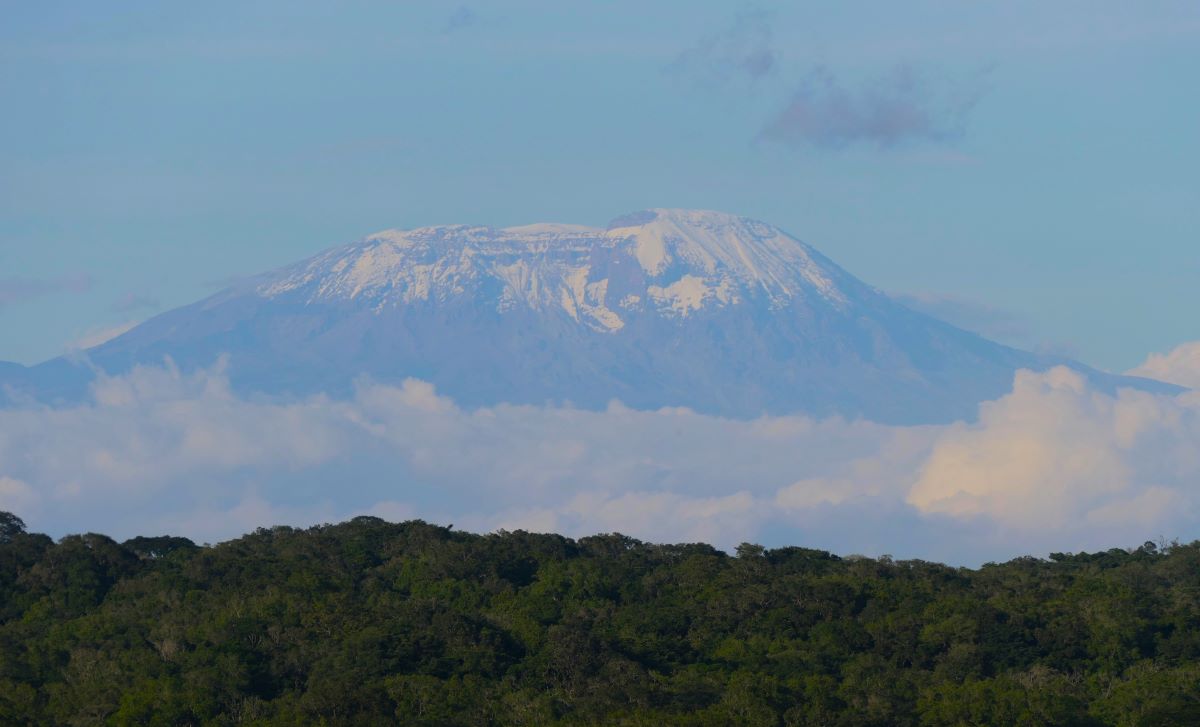
Another plus to a safari in May: we were able to enjoy a beautiful view of Mount Kilimanjaro. Our guides told us that this doesn’t happen very often in the dry season, as the view is often obstructed by dust in the air.
March and April are good months to avoid in Tanzania, as there can be a great deal of rainfall.
Accommodation: Meru Mbega Lodge A lovely setting on the border of Arusha National Park, with great views of both Kilimanjaro and Mount Meru. You may even spot giraffes, colobus monkeys, warthogs, and and elephants from the lodge’s veranda or View Tower.
____________________________________________________________________________________________
The Serengeti: Endless Plain
Recommended by Joanna of The World In My Pocket
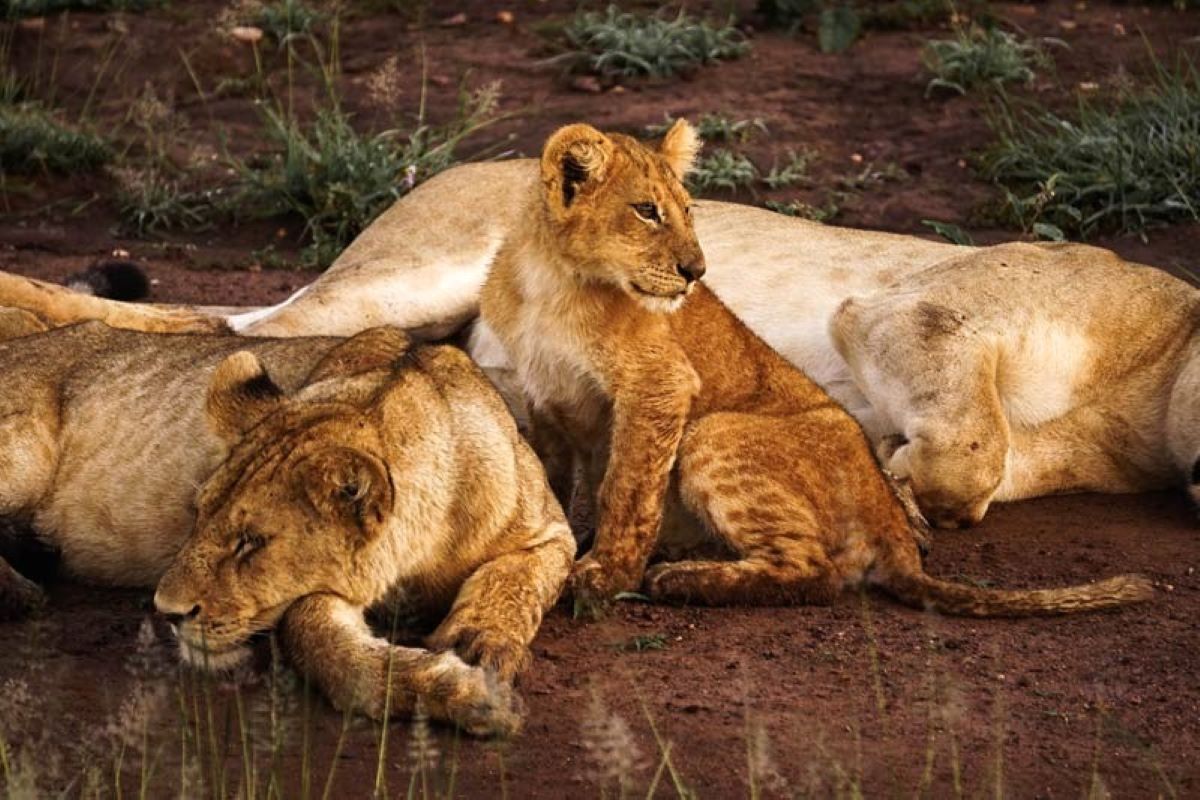
Going on safari in Serengeti National Park was a dream come true and a bucket list experience that I have finally managed to accomplish. Out of the few parks I have visited in Tanzania, Serengeti was one of my favourites because of how large it is and how many animals I’ve seen there.
Whilst you can see the Big 5 in Serengeti, the chances of stumbling upon a rhino are very slim. However, I have seen all other 4 and plenty of other amazing wild animals, in their natural habitat.
Every day in the Serengeti meant a different area with different vegetation and landscape. One day we cruised through the savannah, with small vegetation as long as I could see, and no trees in sight. Another day we went to the river where we spotted hippos and crocodiles. The third day we went to the rocks to see monkeys and hopefully spot lions. We didn’t, as it was the wet season and they were away.
However, our driver didn’t give up and on the last day in Serengeti he tried one more spot. There they were in all their glory: lionesses sleeping in the middle of the road, whilst the lions were watching from the thick bushes in front. In the middle, a couple of lion cubs were playing, just like Simba and Nala do in Lion King.
Before we left we also spotted a cheetah with her three cubs, looking for prey. The animals are used to the safari jeeps and simply ignore them, which is incredible, allowing you to observe their normal behavior in the wild.
I did a budget safari in Tanzania, which meant that we slept in a public camp in Serengeti, without any frills. We had an amazing guide who was also the driver of the jeep, as well as a cook who prepared delicious dishes for breakfast, lunch and dinner. Our safari didn’t include any interactions which the locals, as nobody is allowed to live inside Serengeti, besides the ground keepers.
Accommodation: Serengeti Serena Safari Lodge Located on an acacia-lined ridge, this African-style lodge offers sweeping views of the Serengeti. Enjoy a common barbecue area and an infinity pool.
____________________________________________________________________________________________
Ngorongoro Crater: Africa’s Garden of Eden
Recommended by Linda Egeler of On To New Adventures
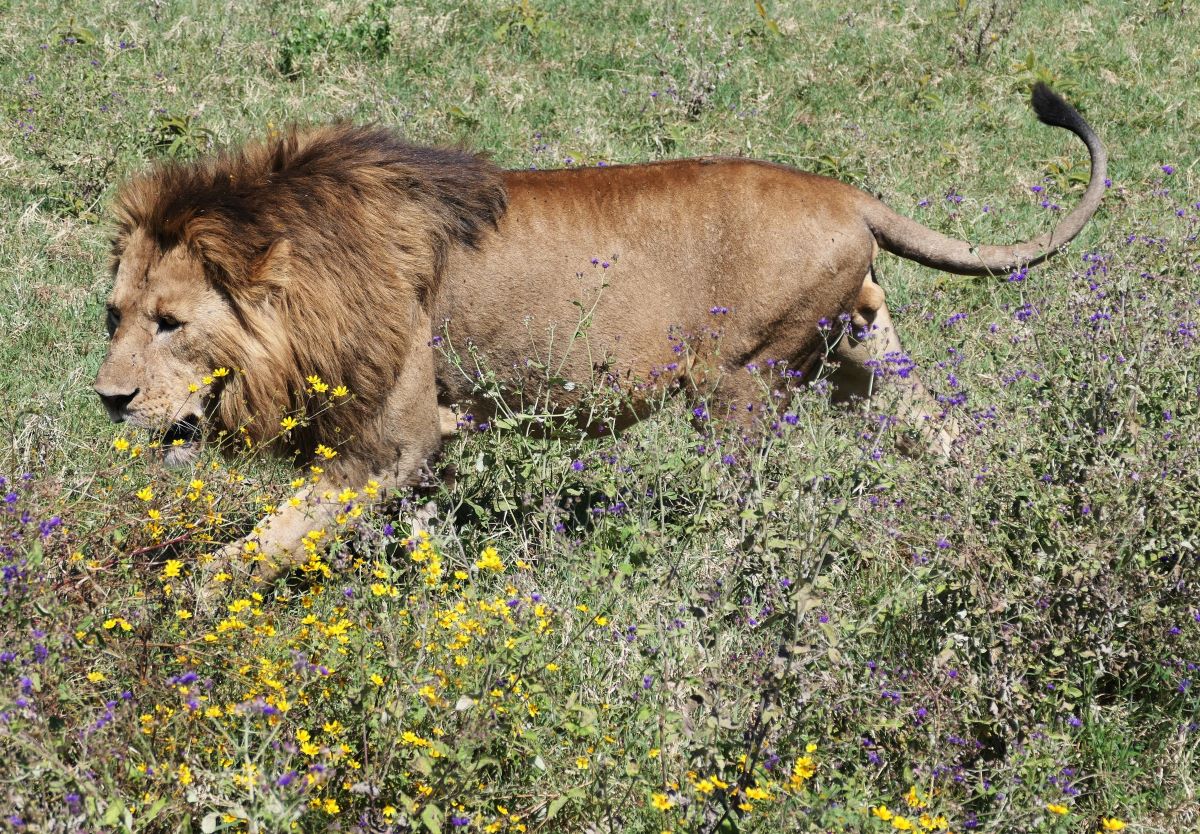
Ngorongoro Crater is a must-visit destination for anyone on safari in Tanzania. This UNESCO World Heritage Site was formed by the explosion of a now-extinct volcano. It’s high walls have created a natural sanctuary teeming with wildlife.
Marvel at the incredible view from one of the lookouts along Ngorongor’s rim. Keep an eye out for the elusive leopard as you descend through the forest to the Crater’s floor. There, you’re pretty much guaranteed to see herds of wildebeest, gazelle, and zebra. Your chances of spotting lions, elephants and hyenas are also very good. (I took the photo at the top of this post in the Ngorongoro Crater)
Ngorongoro is a bird-watcher’s paradise. You’ll likely be able to check ostriches, secretary birds, kori bustards and gray crowned cranes on your birding checklist.
Plan to stop for lunch at the picnic area on the north-eastern edge of Gorigor Swamp and get ready to photograph hippos in their natural hippo pool. Visit Ngorongoro between November through May to see hundreds of flamingos at Lake Magadi.
Best of all, there’s a great chance you’ll be able to spot an endangered black rhino. They can often be seen grazing on the open grasslands on the Crater’s floor.
Two iconic African animal you won’t see in Ngorongoro? Giraffes and impalas: you’ll need to look for them in other areas of Tanzania.
Due to the high walls enclosing the Crater, it’s possible to see its resident animals any time of year. They are especially easy to spot during the dry season between June and October. But this is also peak tourist season, and you’ll encounter scores of visitors from all over the world.
We purposefully planned our visit in mid- May, right before the tourist season kicks off. We’d do it again in a heartbeat: the weather was gorgeous and we enjoyed seeing all types of baby animals.
The crater is located within the Ngorongoro Conservation Area. It’s not a national park, so the Maasai people are allowed to let their livestock graze in the area. Watch for them herding their cattle, goats, and donkeys. It’s also possible to stop in a visit a Maasai village along the outskirts of the Crater.
Accommodation: Ngorongoro Serena Safari Lodge Stay on the rim of the Crater for spectacular views and easy access to wildlife viewing.
____________________________________________________________________________________________
Tarangire National Park : Baobab Capital Of The World
Recommended by Kari LeMay of Achieve Your Bucket List
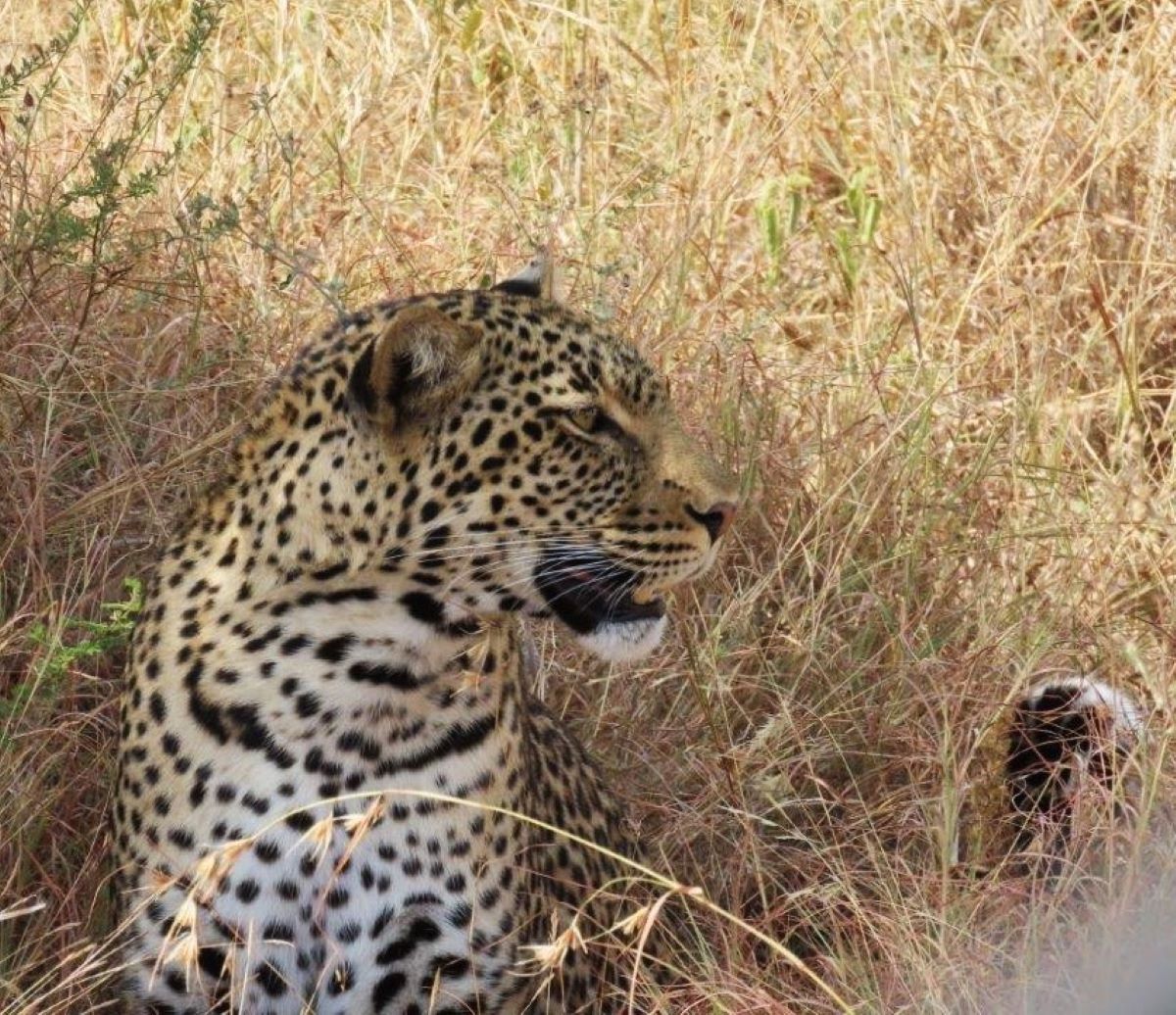
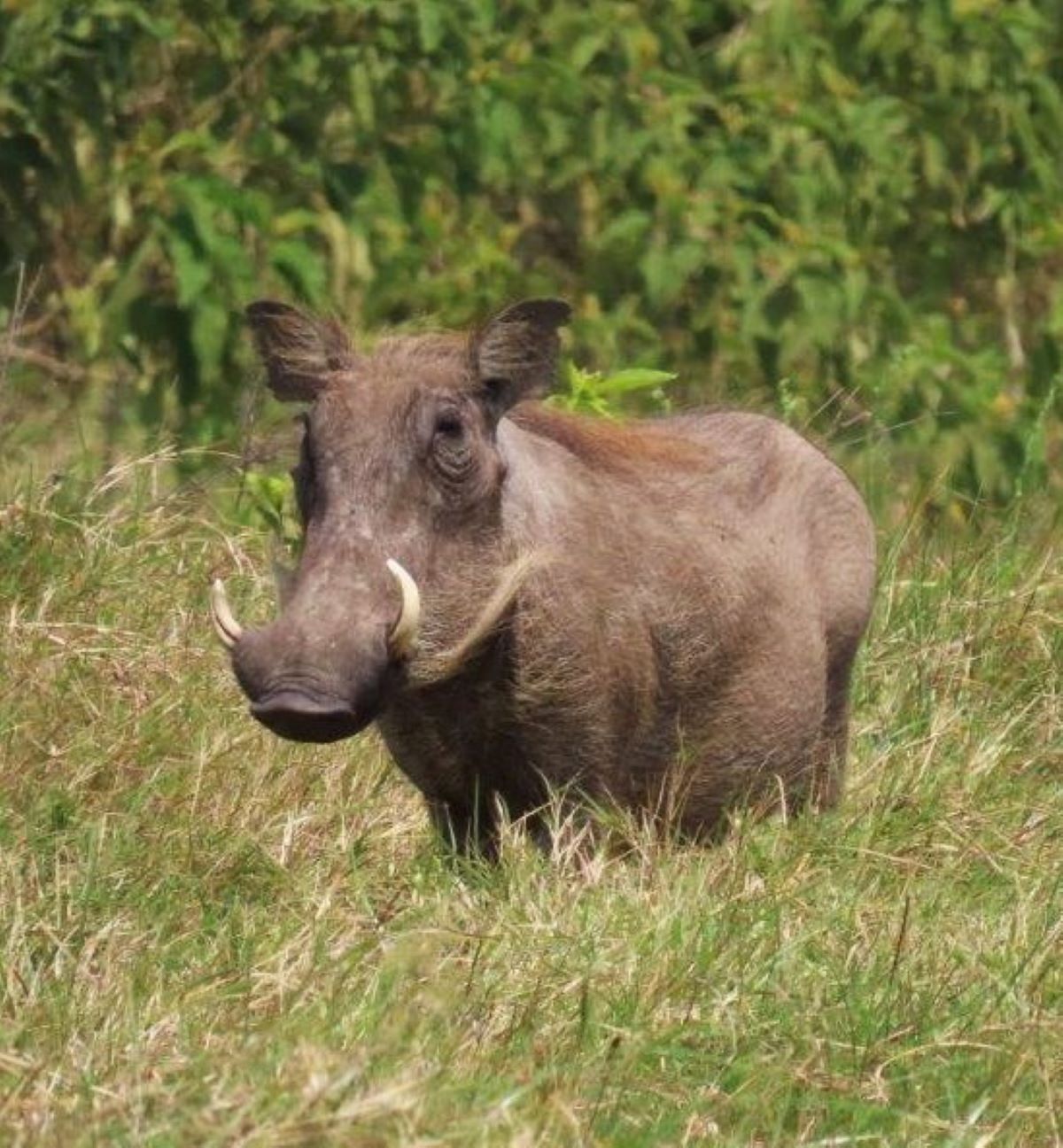
Tarangire National Park in Tanzania is a dream come true for Elephant lovers. It boasts one of the highest concentrations of elephants in the world as they gather to drink from the Tarangire River during the dry season.
We spent one day in August exploring the park and were able to also see lions, cheetahs, giraffes, wildebeest, warthogs, impalas, water bucks, Vervet monkeys, banded mongoose and hundreds of zebras. We got up close and personal with both elephants and zebras as they surrounded our safari vehicle – great photo opportunities!
Tarangire is also home to scores of the iconic baobab tree, nicknamed The Tree Of Life. Some of these magnificent trees are over 1,500 years old!
We highly recommend including Tarangire National Park on your next Tanzania adventure – it’s a treasure that you don’t want to miss! If you can arrange to spend two days there, even better for more wildlife viewing options.
Accommodation: Tarangire Sopa Lodge. Enjoy outdoor dining and a swimming pool, strategically located within Tarangire National Park.
____________________________________________________________________________________________
Selous Game Reserve: Home to Africa’s Wild Dogs
Recommended by Melanie Seneviratne of The World Travel Girl
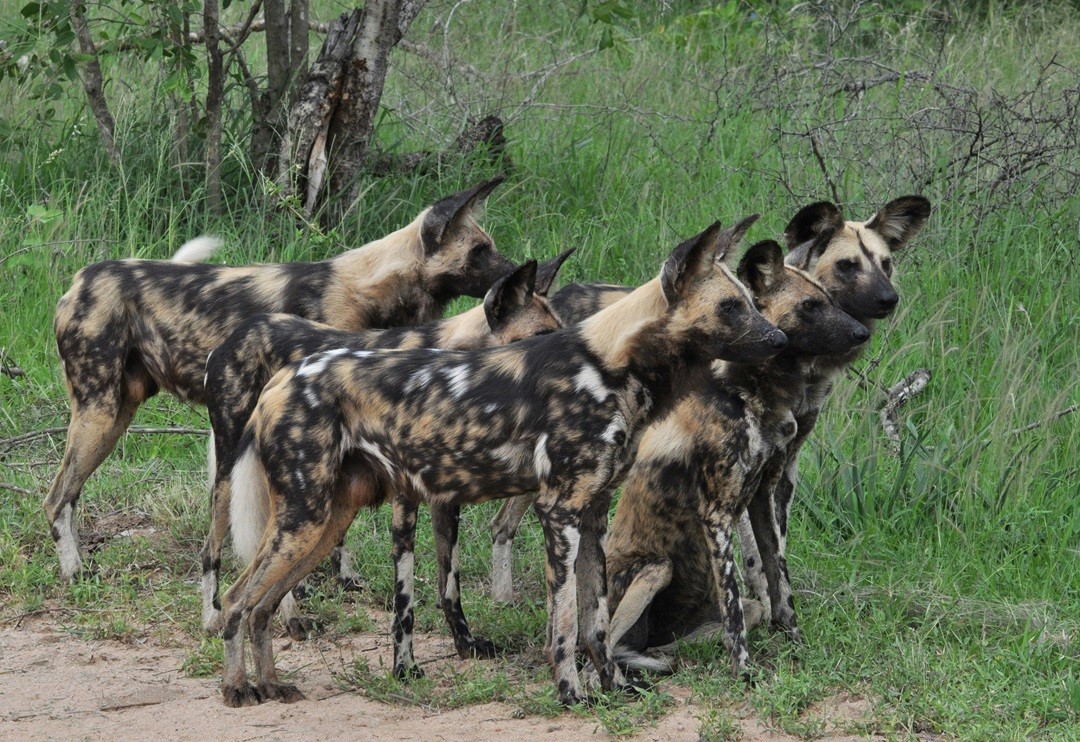
Selous Game Reserve, also known as Nyerere National Park, is located in southern Tanzania, is one of the largest protected areas in Africa, and offers an unforgettable safari experience.
What sets Selous apart is its incredible mix of environment and animals, as well as its relatively low tourist traffic compared to more popular safari destinations. The reserve boasts a diverse range of habitats, including floodplains, woodlands, and savannas, providing a home to a wide variety of wildlife.
While you may not spot the Big Five as frequently as in other parks, Selous offers unique opportunities to encounter African wild dogs, a species that is critically endangered. The reserve is also renowned for its diverse birdlife, with over 440 species recorded. These were the two main reasons that I visited this area and I was not disappointed!
One of the highlights of visiting Selous, other than finding African wild dogs, is the chance to engage in guided walking safaris. These experiences allow you to connect with the environment and observe wildlife up close.
The best time to visit Selous is during the dry season, from June to October. This period offers optimal wildlife viewing conditions as animals congregate around water sources. I visited in February which is considered a shoulder season, so it was hot and dry which made it a perfect time to see wild dogs and birdlife.
Accommodation: Selous River Camp Choose to stay in a “Mud Hut” or Safari tent overlooking the river, with views of hippo pools below.
____________________________________________________________________________________________
Best Places to Go On Safari In Kenya
Masai Mara National Reserve: Known For The Great Migration
Recommended by Pam Drager of The Directionally Challenged Traveler
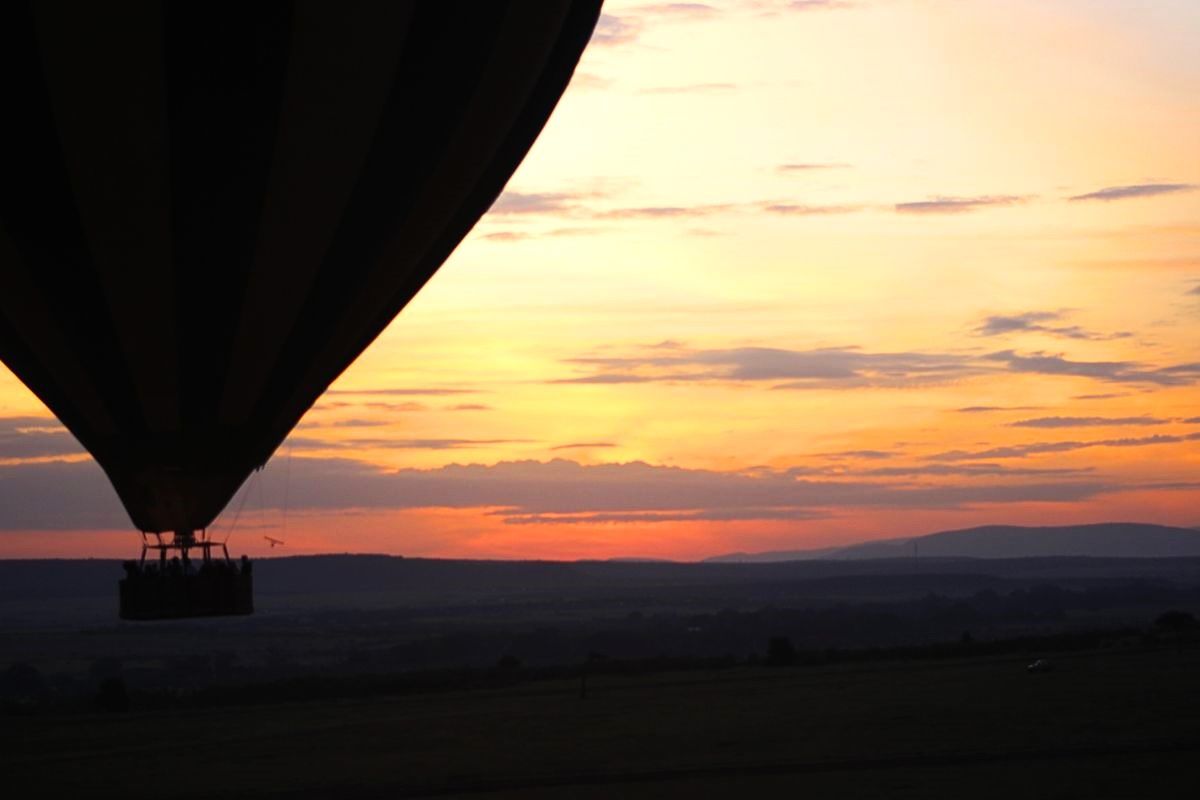
The Masai Mara is one of the most iconic safari destinations in Africa. Witnessing the Great Migration here is an unforgettable experience. Every year, from July to September, over a million wildebeest, along with hundreds of thousands of zebras and gazelles, move across the plains in search of fresh grazing lands, with predators like lions, cheetahs, and hyenas following closely behind.
The sheer scale of the migration is a sight to behold, especially when the animals make their perilous river crossings, where crocodiles lie in wait. This is also one of the best times to see the “Big Five” safari animals (lion, leopard, elephant, buffalo, and rhino) in their natural habitat.
While daytime safaris offer incredible opportunities to witness wildlife, night drives are a unique way to experience the Mara’s nocturnal wonders. As the sun sets, many predators become more active, and with the help of flashlights, you can catch glimpses of lions on the prowl, or even the elusive leopard sneaking through the bush.
Another must-do is a sunrise hot air balloon ride over the Masai Mara , where you’ll watch the sunrise over the savannah while floating silently above herds of wildlife. It’s a peaceful, almost dreamlike way to take in the vastness of the landscape.
During your visit, make sure to spend time with a Maasai tribe to learn about their rich culture and traditional way of life. The Maasai are known for their distinctive red shukas (cloaks), intricate beadwork, and strong connection to the land.
Accommodation: Soroi Mara Bush Camp A stay at the Soroi Mara Bush Camp provides an authentic yet luxurious base for your safari adventure. Located next to the Talek River, the camp offers stunning views and is ideally located in the heart of the Mara. Plus, the camp’s eco-friendly approach ensures that your stay has a minimal impact on the environment.
____________________________________________________________________________________________
Amboseli Nationla Park: Nestled Below Mount Kilimanjaro
Recommended by Aimee Stephens of Snap Happy Travel

Amboseli National Park is located in Kenya, around 3 hours from the country’s capital, Nairobi. The park is so picturesque as it’s set against Mount Kilimanjaro. It’s also pretty small in comparison to other parks in Africa (at 400 square kilometers) so you can cover a lot of ground in one day.
This park features a high concentration of animals including the big five. On a typical safari day in Amboseli, you can expect to see giraffes, zebras, hyenas, antelopes, cheetahs, and of course elephants.
In fact, Amboseli National Park is best known for having the biggest population of African Elephants in the world. Would you believe that over 1,600 elephants call this park home?! And they are some of the largest in the species – both in tusk size and body size.
Due to the park’s compact size you will be able to see most of the park in one full day. On our tour, we saw over 100 African elephants, buffalo, wildebeest, giraffes, zebra, hyenas, and more. We stopped for lunch (as most tours do) at Observation Hill, which offers a fantastic view of a swamp where you can see African elephants wading through the water.
As for the best time of year to visit Amboseli, I recommend sticking to the dry months – June to October and January/February. As this is when the animals will be out in the open and thus easily visible from your safari vehicle.
We chose to stay at Maasai Simba Camp to visit Amboseli National Park. The camp is owned and run by the Maasai people and all the profits from the camp go towards helping the local Maasai people. Included in our rate was a full-day safari through Amboseli National Park, a sunset and sunrise walking Safari, and a jewelry-making session with the Maasai women.
Accommodation: Maasai Simba Camp Enjoy stunning views of Mount Kilimanjaro and the African savannah while gaining a unique glimpse into life as a Maasai.
____________________________________________________________________________________________
Tsavo National Park: Kenya’s Largest Safari Park
Recommended by Steph of Book It Let’s Go!
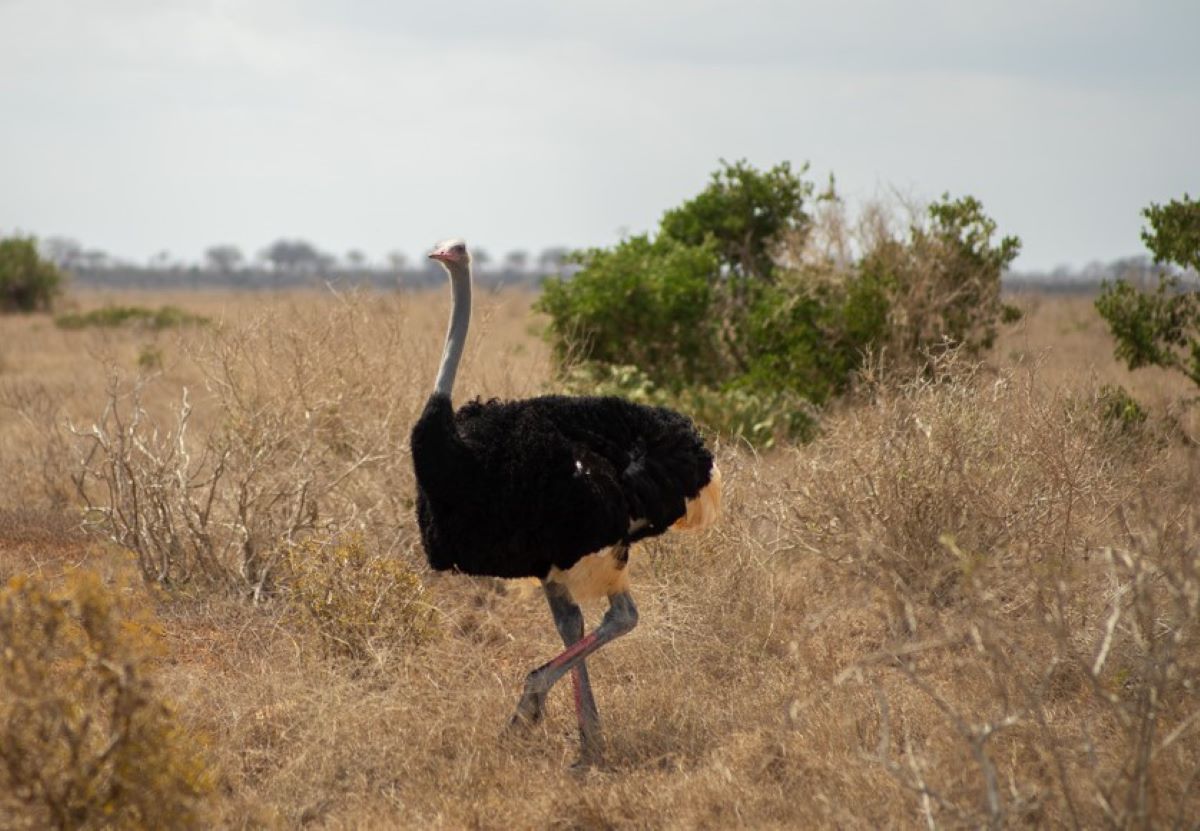
Tsavo National Park is the largest safari park in Kenya and is home to the big five. It is also one of the lesser-known safari parks which makes it a great destination for a budget safari in Africa. Tsavo National Park is divided into two parts: Tsavo East and Tsavo West, with each side offering something different.
Tsavo East is what you would expect from a traditional safari with flat dry plains stretching for miles where you can see elephants, giraffe, lions, zebra and cape buffalo along with over 500 species of birds.
In contrast, Tsavo West is more mountainous and has rivers and lakes dotted around so you can spot hippos and crocodiles. Tsavo west is also home to Mzima Springs, which provides all the fresh water to the city of Mombasa.
The highlight of my trip to Tsavo West was the Ngulia Rhino Sanctuary, a designated protected area with 80 black rhinos inside. I wasn’t lucky enough to spot any elusive rhinos, but what made it the best part of my trip was the huge leopard lounging by the side of the track. It was magical!
There isn’t really a best time to visit Tsavo National Park but July-September tends to be slightly cooler, making it the most pleasant time to visit if you want to avoid the heat of Africa.
Accommodation: Lake Jipe Eco Lodge Located just outside of Tsavo West National Park, the Lake Jipe Eco Lodge promotes sustainable tourism while providing a tranquil retreat for nature enthusiasts and wildlife lovers. You’ll find an abundance of bird life, and distant views of Mount Kilimanjaro.
____________________________________________________________________________________________
Samburu National Reserve: Home to the Samburu Special Five
Recommended by Heather Cole of Conversant Traveller
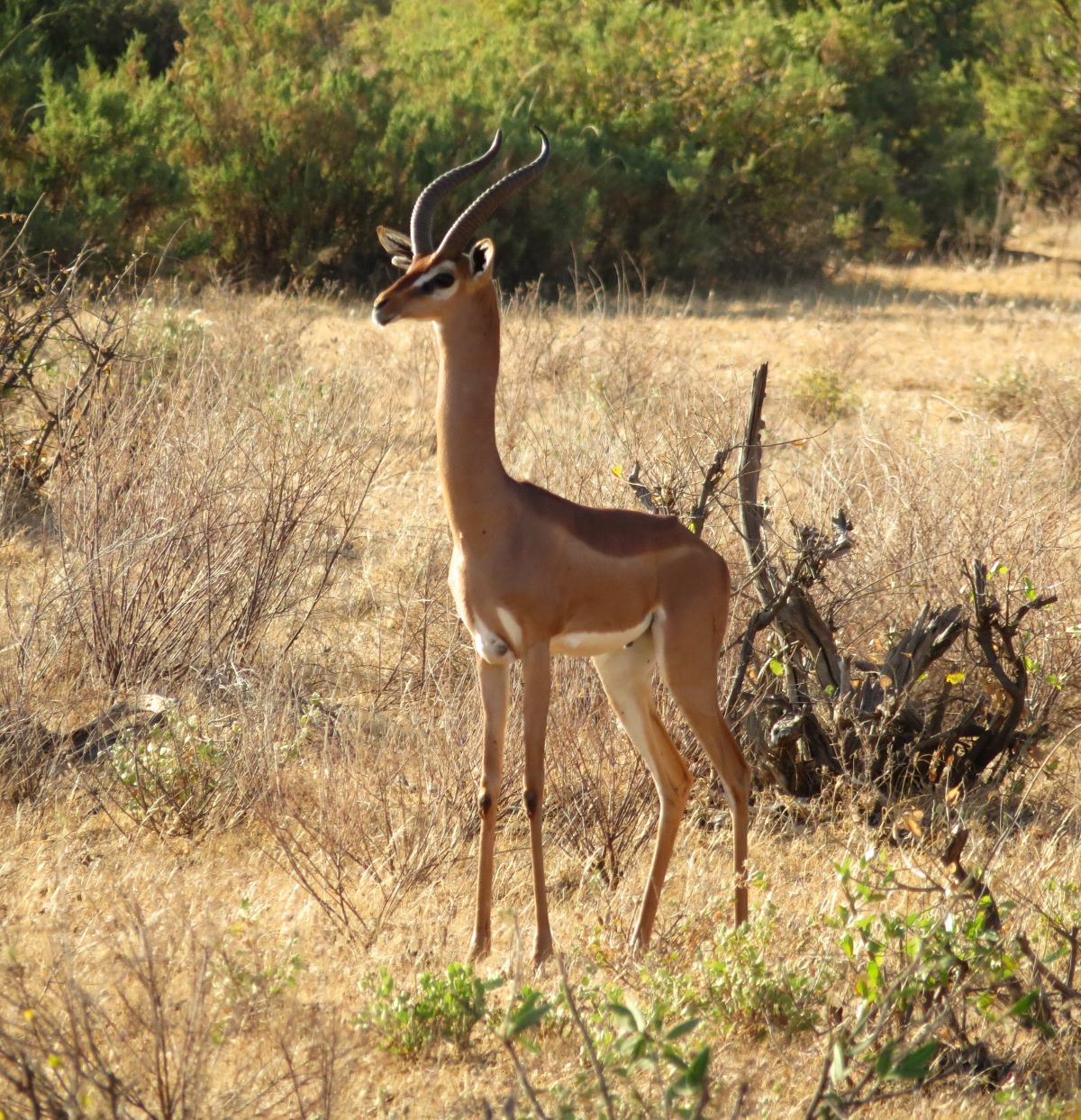
Samburu National Reserve lies up in the north of Kenya, on the banks of the Ewaso Ng’iro River. Not as well known as places like the Masai Mara, Samburu is a great location for seasoned safari-goers to experience something a bit different. Game drives are the main safari activity here, both in the reserve and surrounding conservancies.
The arid landscapes are home to the Samburu Special Five, which is a collection of animal species endemic to these northern regions. The most unusual of them is the gerenuk – an antelope that stands on its hind legs to feed on low tree branches. You should also keep an eye out for the Grevy zebra, Somali ostrich, Beisa oryx and reticulated giraffe. The reserve is known for its elephant herds, and leopards are often spotted here too.
One of our favourite experiences was seeing the Samburu herdsmen leading their cattle to water. A very special event to witness in Samburu is the Singing Wells, a traditional ritual where warriors sing whilst digging wells in the dry riverbed. The herds hear the songs and follow the music to the water.
As well as safaris, you can visit local villages for cultural experiences, and we suggest checking out the Reteti Elephant Sanctuary too. The latter takes in orphaned elephants with the aim of releasing them back into the wild when they’re ready.
Samburu is a year-round safari destination, but the best time to visit is between June and September, or January and February. These are the dry months, which means vegetation is sparse and animals are easy to spot as they congregate around the dwindling water sources.
Accommodation: Samburu Sopa Lodge. This safari lodge is built up atop high ground, and has amazing views out over the reserve.
____________________________________________________________________________________________
Best Places To Go On Safari In Uganda
Murchison National Park: The Most Powerful Waterfall In The World
Recommended by Michelle Moyer of Moyer Memoirs: Empty Nest Travel Adventures
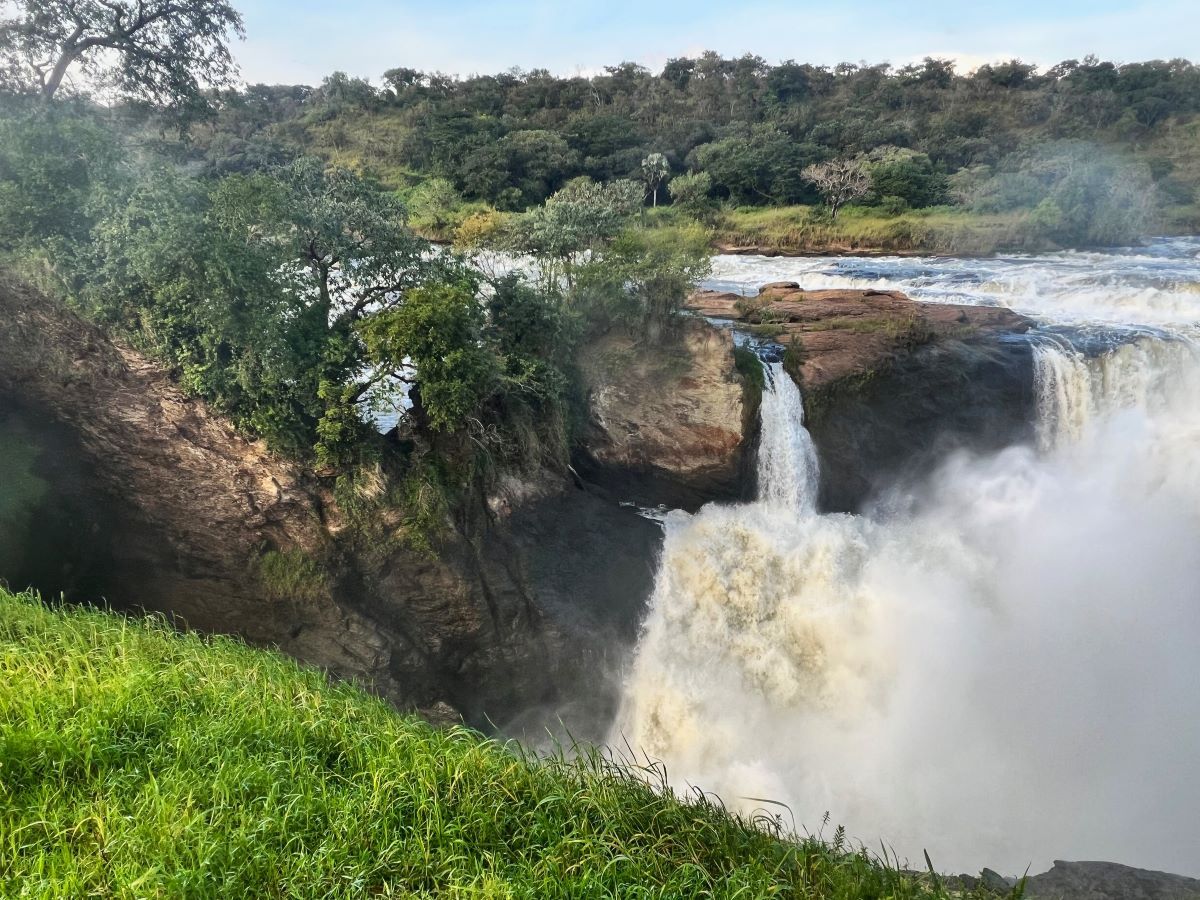
One of the best places to go on safari in Africa is Murchison Falls National Park. When planning a trip to Uganda, include several days to a week at this amazing national treasure.
The park is full of safari wildlife and also has a must-visit waterfall that displays the sheer power of nature and makes this park truly special. Murchison Falls roars over through a narrow gorge and into the Nile River. Start your exploration of Murchison Falls National Park at the top its waterfall and then continue to discover the beauty for over 1,500 square miles of African savannah.
Elephants and buffalo are the most abundant of the Big Five in Murchison Falls National Park. Lions and leopards are scarce and elusive, so they are commonly not sighted. In addition, giraffes, kob, and hartebeests are commonly sighted and the park is known for having a diverse bird population.
One of the most popular activities in Murchison Falls National Park are Nile River cruises. While on your boat ride, you can spot hippos and crocodiles hanging out in the river, in addition to families of elephants coming to the watering hole for a refreshing break from the hot African sun. Being right on the river gets you a close-up view of all the African wildlife.
Anytime is a great time to visit Murchison Falls National Park. The best time to visit will depend on your travel style and your interests. The two dry seasons (June – September and December – February) allow great wildlife viewing because the dry vegetation is less dense and the animals gather around water sources. However, the rainy seasons (March- May and October – November) offer fewer crowds, beautiful lush scenery, and better prices. Remember though that the rainy season also brings the rain which produces muddy bumpy African road conditions.
There are luxury, mid-range, and tented camps options in and around Murchison National Park. Our favorite was Fort Murchison, which is close to the northern entrance. It had all the comforts and was a relaxing retreat after our day-long safaris.
Accommodation: Fort Murchison Lodge Located on the banks of the Albert Nile River, you can choose from spacious room in the lodge or comfortable thatched tents.
____________________________________________________________________________________________
Bwindi Impenetrable National Park: Home to Mountain Gorillas
Recommended by Melodie Rush of Travel Must Do’s
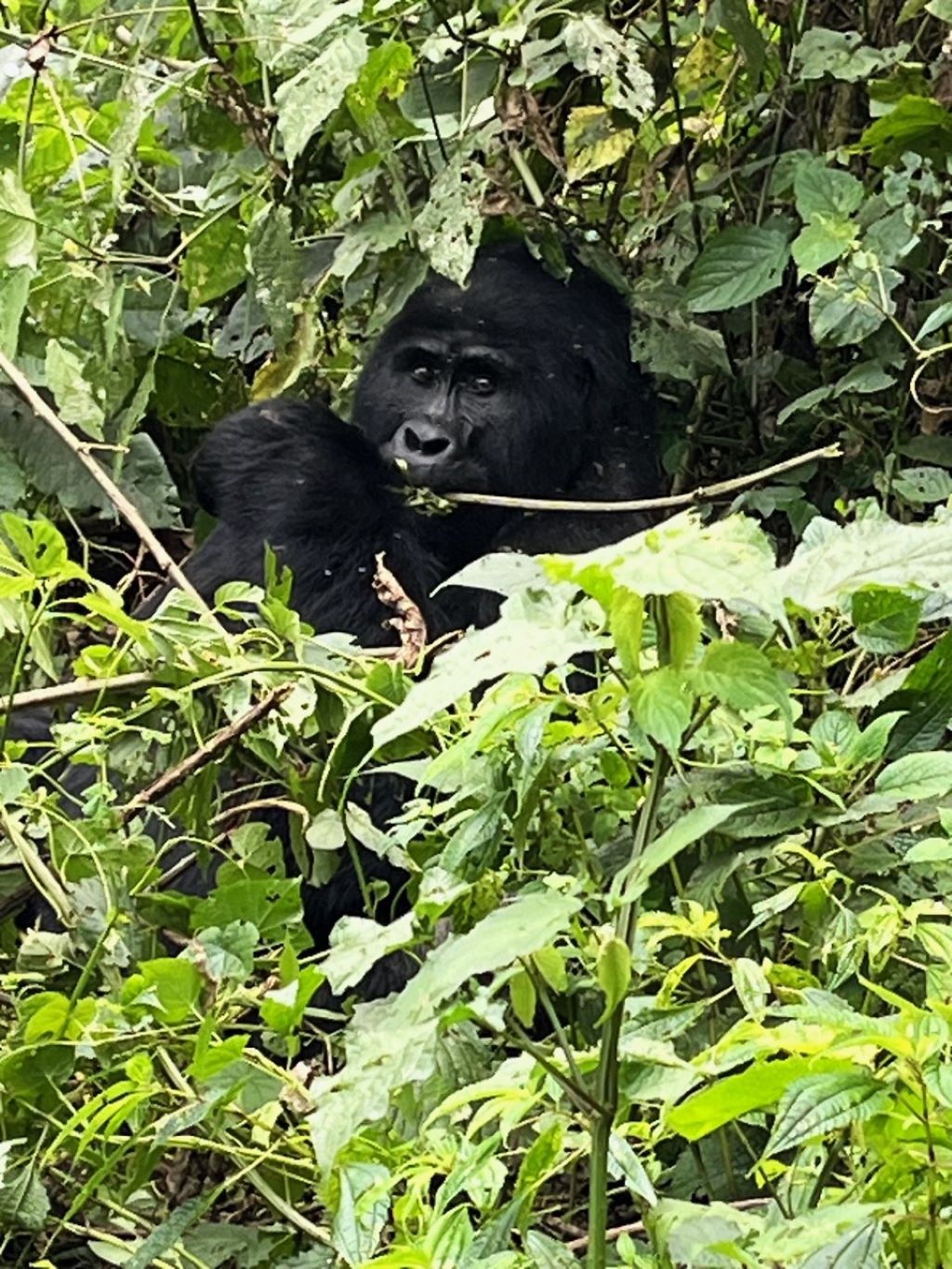
Nestled in southwest Uganda, Bwindi Impenetrable Forest offers an extraordinary safari experience unlike any other in Africa. Famous for its lush, dense rainforest, this remarkable park is home to nearly half of the world’s remaining mountain gorillas.
Hiking through Bwindi’s foggy forest to observe gorillas in their natural environment is an unforgettable experience. The gorilla treks are capped at 8 participants per gorilla group, guaranteeing a responsible wildlife interaction that reduces the impact on both the animals and their habitat.
In addition to the mountain gorillas, Bwindi has a range of wildlife. Trekkers may have the exciting opportunity to encounter the elusive forest elephant, a rare subspecies known for their smaller size and unique adaptations that enable them to thrive in dense, enchanting forests, in contrast to their larger savanna relatives.
The park also features more than 350 bird species, many of which are unique, rendering it an ideal spot for bird enthusiasts. Although the classic Big Five are absent from this area, the opportunity to observe gorillas, elephants, and various other primates and rare species makes Bwindi distinct from more conventional safari locations.
The best time to explore Bwindi is during the dry months, from June to August and December to February when trekking conditions are optimal. For a great experience, think about booking a stay at Ichumbi Gorilla Lodge, which is conveniently situated just a brief stroll from Bwindi’s Rushaga sector. This eco-conscious lodge offers cozy accommodations with stunning vistas of the surrounding hills, coupled with friendly service that enables guests to unwind after an extensive day of trekking through the jungle.
Accommodation: Ichumbi Gorilla Lodge. Just a ten minute walk to the gate of Bwindi Impenetrable Forest!
____________________________________________________________________________________________
Best Places To Go On Safari In Zambia
South Luangwa National Park: Home To The Bushbuck And The Kudu
Recommended by Melanie Ferguson of Postcards & Places
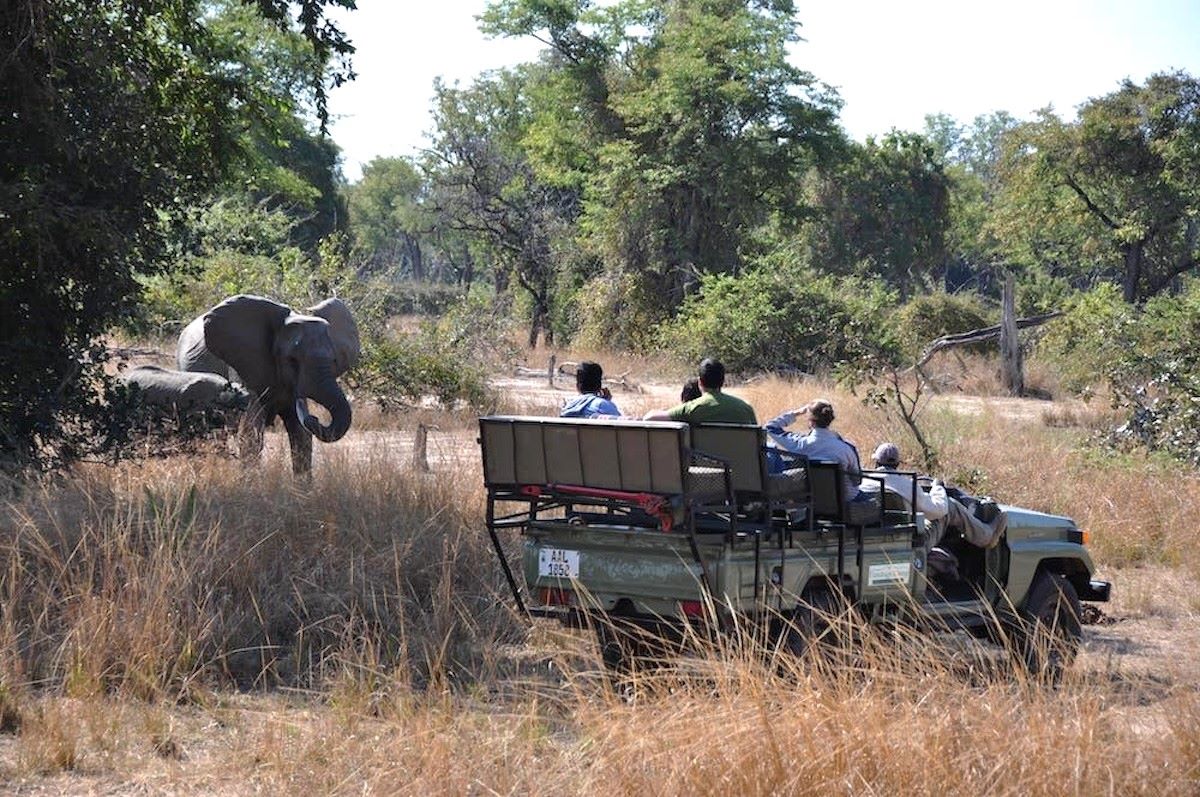
South Luangwa National Park is an awesome—and perhaps underrated—place to go on safari in Africa. Because it is less known than other safari parks in the region, it stands out as an uncrowded alternative. The 3490-square-mile park is located in the Luangwa Valley in eastern Zambia, bordered to the south by the Luangwa River.
The park consists of wooded and grassy savannah habitats. South Park, as it is commonly known, is famous for its walking safaris and fully open safari vehicles, which offer unobstructed views of the landscapes and wildlife.
Four out of the Big Five safari animals can be found in South Luangwa National Park: lions, leopards, buffalo, and elephants. Unfortunately, rhinos were poached and can no longer be found in the area. Other exciting animals that can be found in the park include monkeys, warthogs, and zebras.
The ideal time to visit is during the dry season, which typically runs from April to October. This period offers the best opportunities for wildlife viewing, as animals gather around water sources and vegetation is less dense.
In contrast, the wet season from November to March can present challenges: lodging options are more limited, some roads may become impassable, and the heat and humidity can be intense.
Accommodation: Msandile River Lodge Ideally located on the riverbank, with opportunities to view elephants, hippos and giraffes right at your doorstep.
____________________________________________________________________________________________
Best Places To Go On Safari In Botswana
Chobe National Park: Spectacular Wildlife Viewing Opportunities
Recommended by Sarah Camp of In Search of Sarah
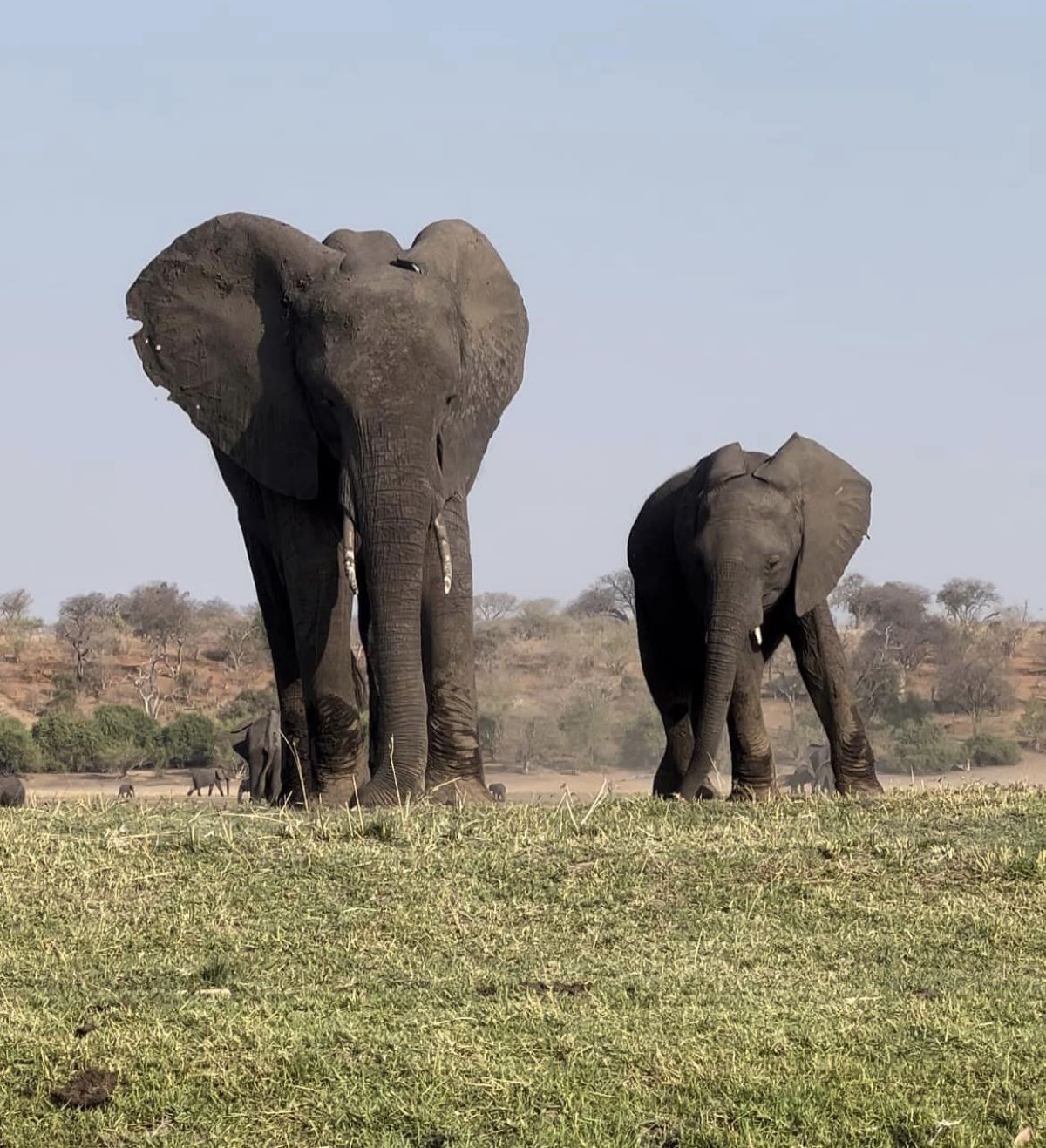
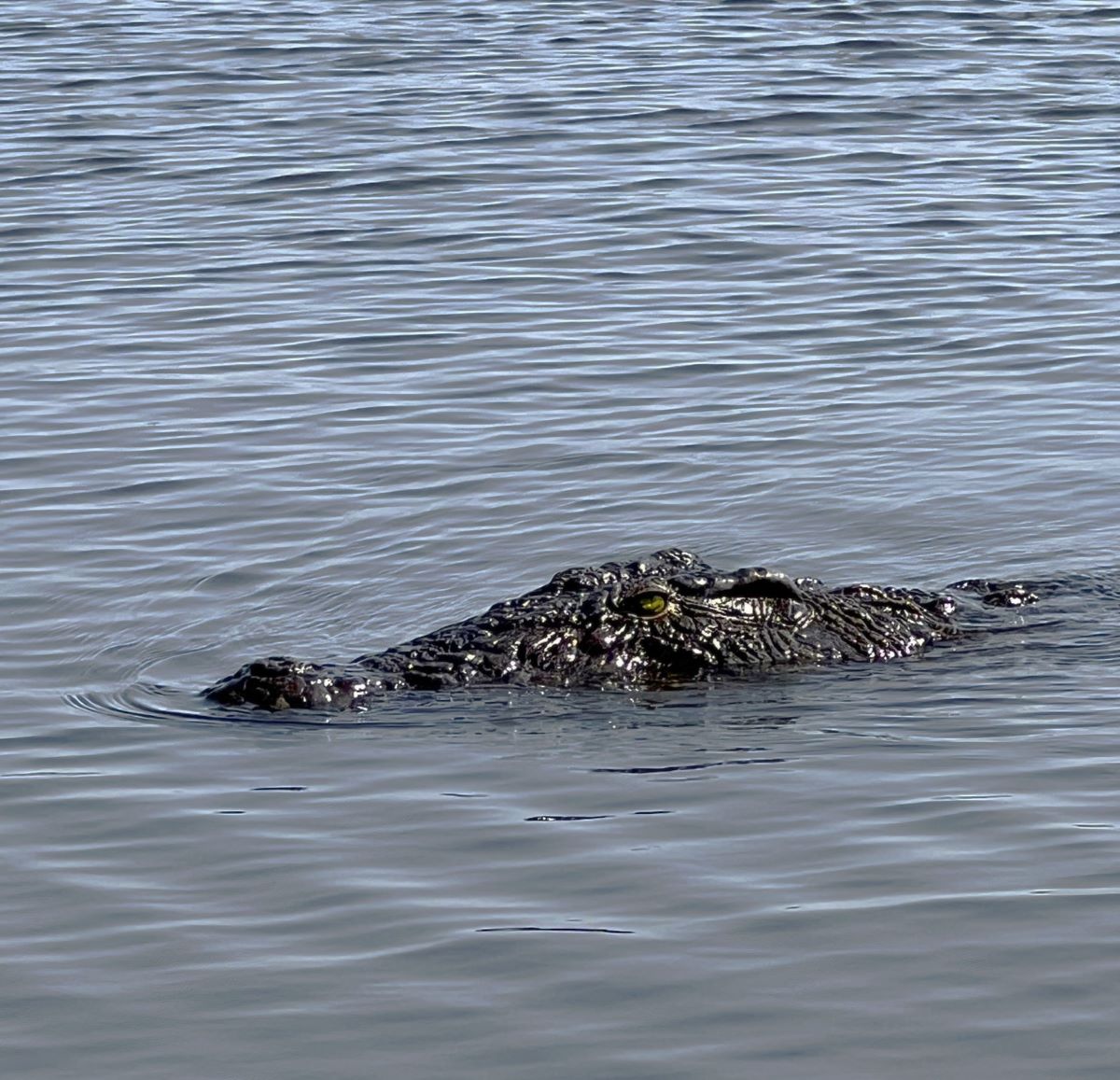
Chobe National Park, located in northern Botswana, is a must-visit safari destination for those seeking something different than your typical game drive safaris. Bordering Namibia, Zambia, and Zimbabwe, it offers easy access to several African countries.
What sets Chobe apart is its incredible elephant population— home to one of the largest concentrations of elephants in the world! This is a dream safari destination for those looking to have a life changing experience up close to so many elephants in their natural habitat.
Chobe is famed for its diverse ecosystems, from lush floodplains to dense woodlands, each teeming with wildlife. Apart from the elephants, you will also have the chance to spot the Big Five – lions, leopards, buffalo, and even the rare opportunity to see rhinos. Crocodiles, hippos, zebras, antelope, and giraffes are abundant throughout the park. It’s also a birdwatcher’s paradise, with over 450 bird species, such as the vibrant kingfishers.
Guided boat safari along the Chobe River are an absolute must, where you can get up close to hippos, crocodiles, and elephants in and along the river banks. If you prefer to be on land, there are a ton of safari drives that will allow you to get up close to the wildlife. Night drives offer the chance to see lions, leopards, and hyenas.
The best time to visit Chobe is during the dry season (May to October) when wildlife is gathered around water sources. The cooler temperatures also make it more comfortable for travelling. The rainy season (November to April) offers a different experience with lush vegetation and the possibility of witnessing newborn animals.
For a luxurious stay, Cresta Mowana Resort in Botswana offers panoramic river views and an incredibly relaxing atmosphere with numerous restaurants, spa services, and pools. Alternatively, Ichingo River Lodge in Namibia provides a truly unique experience with luxury tented camp accommodations and includes river safari tours, fishing excursions, an all-inclusive meal and beverage plan, and transportation to and from the border crossing in Botswana.
Accommodation: Cresta Safari Resort Each of the rooms and suites at Cresta Mowana are air conditioned and have a balcony overlooking the Chobe River.
____________________________________________________________________________________________
Okavango Delta: The African Oasis
Recommended by Deb Hendricks of Introvert With Itchy Feet
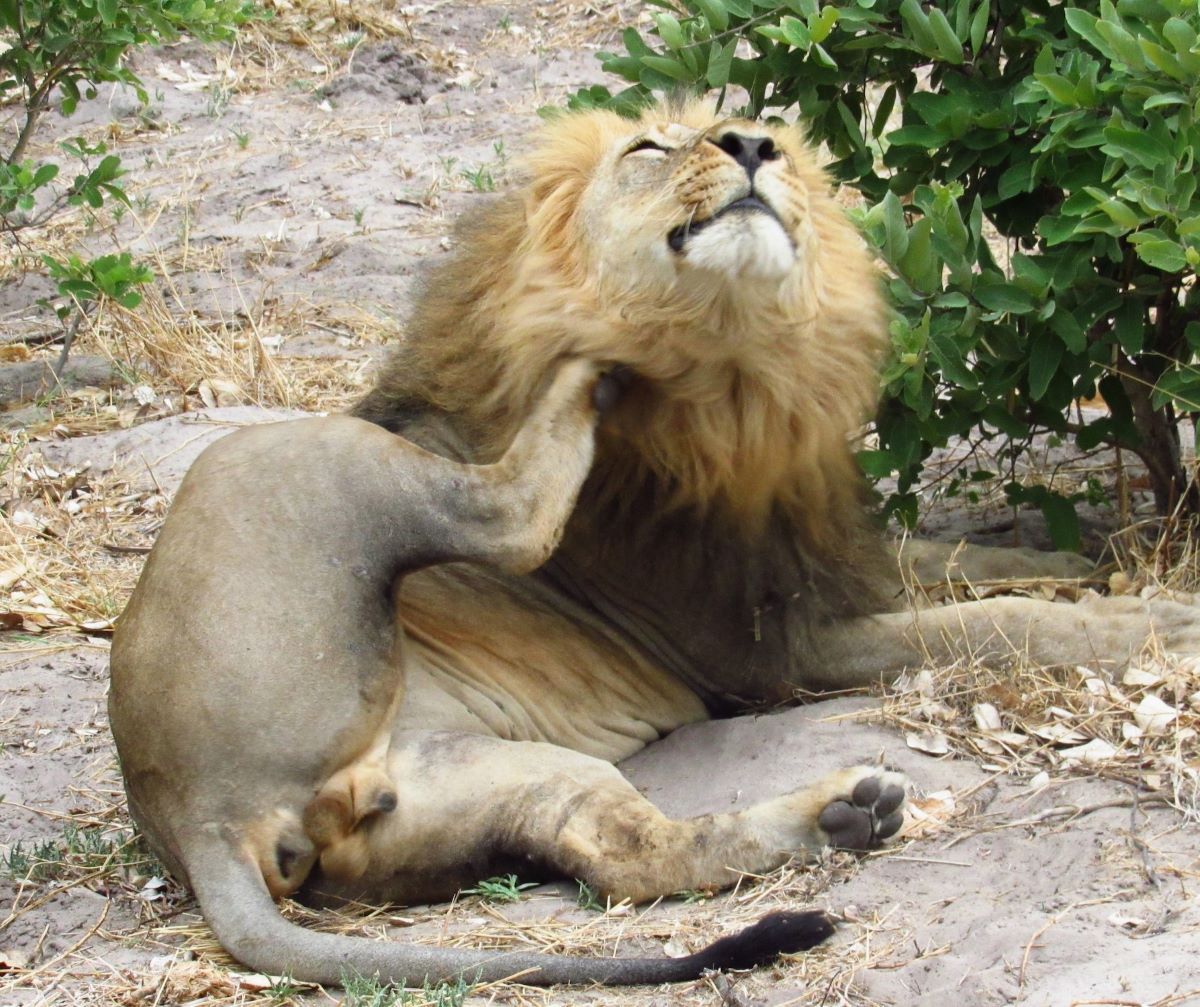
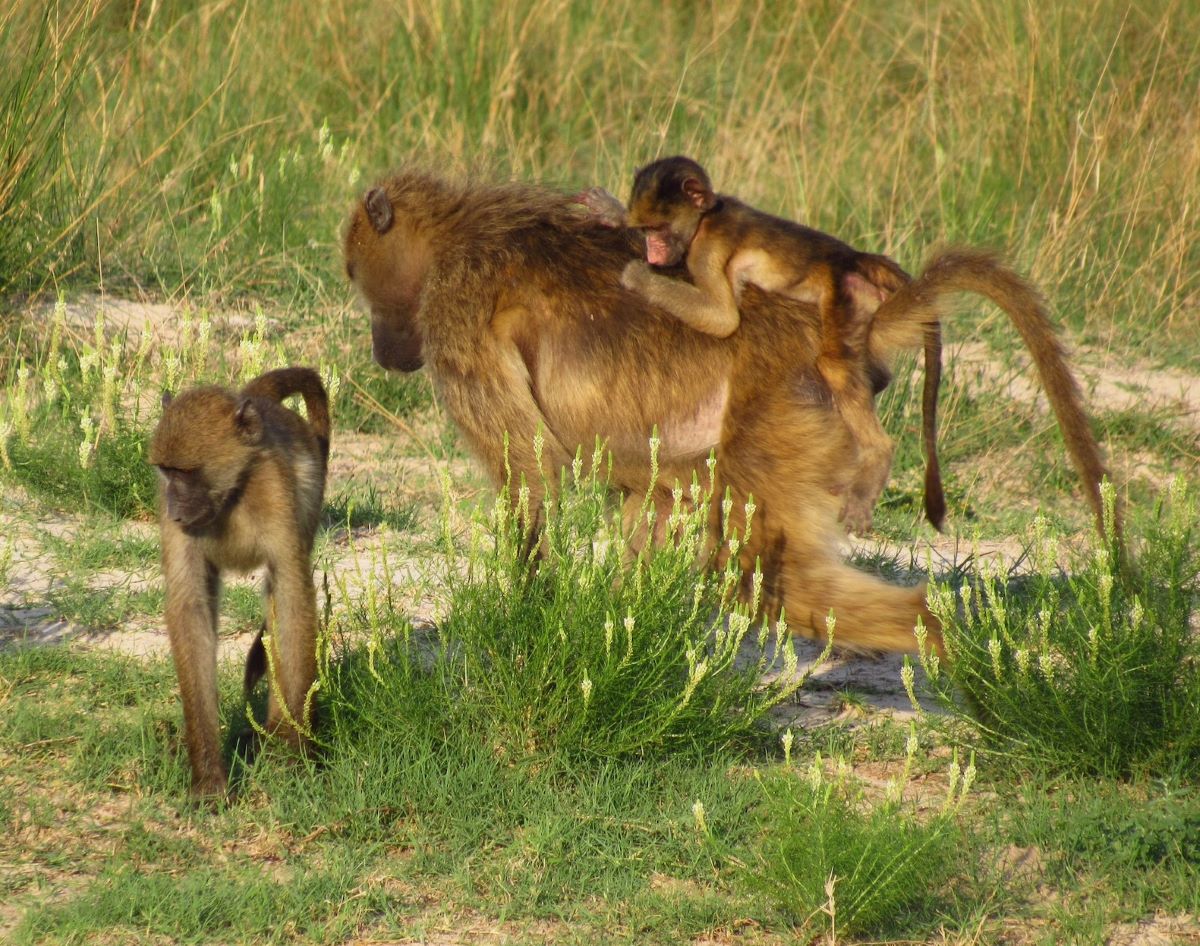
Botswana’s Okavango Delta is a spectacular natural wonder in the northwest part of the country. It’s known for its sprawling wetlands that transform the area into a teeming oasis each year.
This unique geographic phenomenon occurs when floodwaters travel from the Angolan highlands. After 1,000 kilometers the waters reach the delta, peaking during the dry winter months. This influx creates an incredibly lush wildlife habitat that’s in stark contrast to the surrounding arid landscapes.
A visit to the Okavango Delta is a front-row seat to some of the most varied wildlife spectacles on the planet. Elephants, hippos, lions – all of the Big 5 – and countless bird species seem to appear around every bend in the waterways.
After exploring the African wilderness for decades, the delta is still one of my favorite wildlife experiences. The diversity and density in the animal population is astounding.
Another aspect that sets the delta apart is one of its main methods of exploration. This is by mokoro, a traditional dugout canoe.
Picture gliding low through still waters lined with reeds and papyrus, with a local guide propelling your boat. This is your chance to see the intricate ecosystem and its inhabitants from a fresh perspective.
If you’re planning a trip to the delta, timing is important. The best months to visit are May to September, during the delta’s flood season.
This is a cooler time of year, and it comes with a surge of activity as more wildlife moves into the water-rich area. It’s prime time for anyone looking to connect with the area’s iconic wildlife and experience the wild beauty of Botswana’s most famous wetland.
A trip to the Okavango Delta is the ultimate African adventure, and one you’ll remember for a lifetime.
Accommodation: The Waterfront, Maun At this bed and breakfast on the Thamalakane River, you may be lucky enough to see a hippo or crocodile cruising past your veranda.
____________________________________________________________________________________________
Khwai Private Reserve: Known For Frequent Leopard Sightings
Recommended by Ella McKendrick of Safaris By Ella
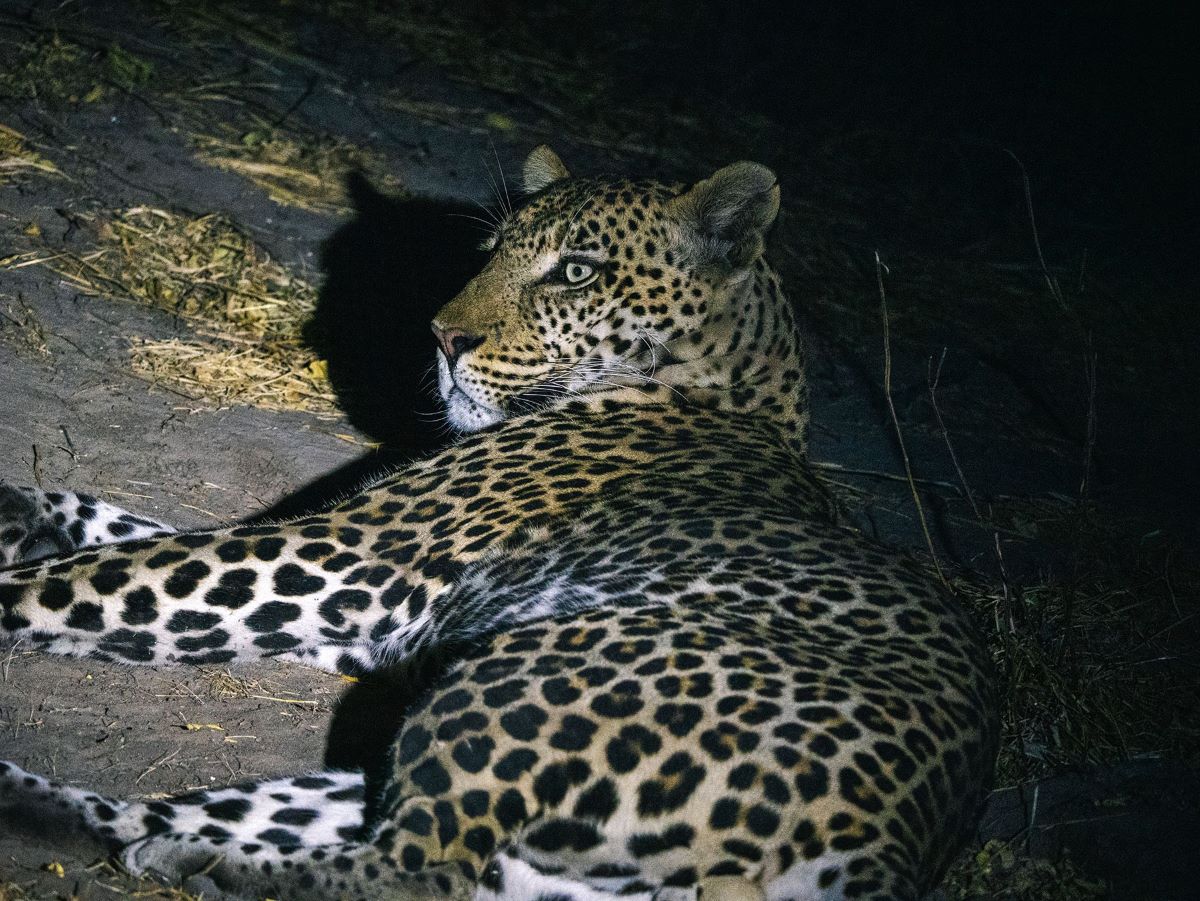
Sandwiched between Botswana’s famous Chobe National Park and Moremi Game Reserve in Northern Botswana is a private concession known as Khwai. The close proximity of these wildlife havens make a several day Botswana safari itinerary to all three extremely easy. There are no physical boundaries between the reserves, allowing wildlife to move freely between them.
Khwai is owned by the native San community, a wonderful example of how wildlife conservation can go hand in hand with supporting local communities.
Covering an area of only 1,800 km², what this corner of the Okavango Delta lacks in size, it certainly makes up for in terms of density of wildlife. You can find Four of the Big Five here. Rhinos sadly are not present.
Khwai is perhaps most famous for its frequency of leopard sightings. It’s one of the few places in Africa where your chances of spotting this elusive predator are relatively good. Living up to its reputation, I had one of my best ever leopard sightings in Khwai. A magnificent male leopard had recently caught a warthog and stashed it in a tree before retreating to the woodland. I watched in amazement as the leopard sauntered back, stretching and yawning beneath the great leadwood tree before leaping into the tree’s fork and feasting for several hours. It was a moment that will stay with me forever.
Khwai also houses a healthy population of lions, elephants, giraffes, zebras and countless other species. Whilst not as common, I also spotted two male cheetahs here.
Unique to Kwai is that, unlike government owned reserves in Botswana which have strict curfews, you can go on night game drives here and see wildlife that you’d struggle to find during daylight hours. I was able to see bushbabies, spring hares, a genet and a nightjar.
The best time to visit Khwai and Botswana is in the dry season, between May and October. Foliage isn’t as dense at this time of year, and wildlife tends to congregate around water sources, making wildlife spotting easier. Being winter in Botswana, it also doesn’t get too hot at this time of year.
Accommodation: O Bona Moremi Safari Lodge. Spacious safari tents feature small patios with outdoor showers.
____________________________________________________________________________________________
Kgalagadi Transfrontier Park: Home To Gemsbok and Meerkat
Recommended by Sarah Camp of In Search Of Sarah
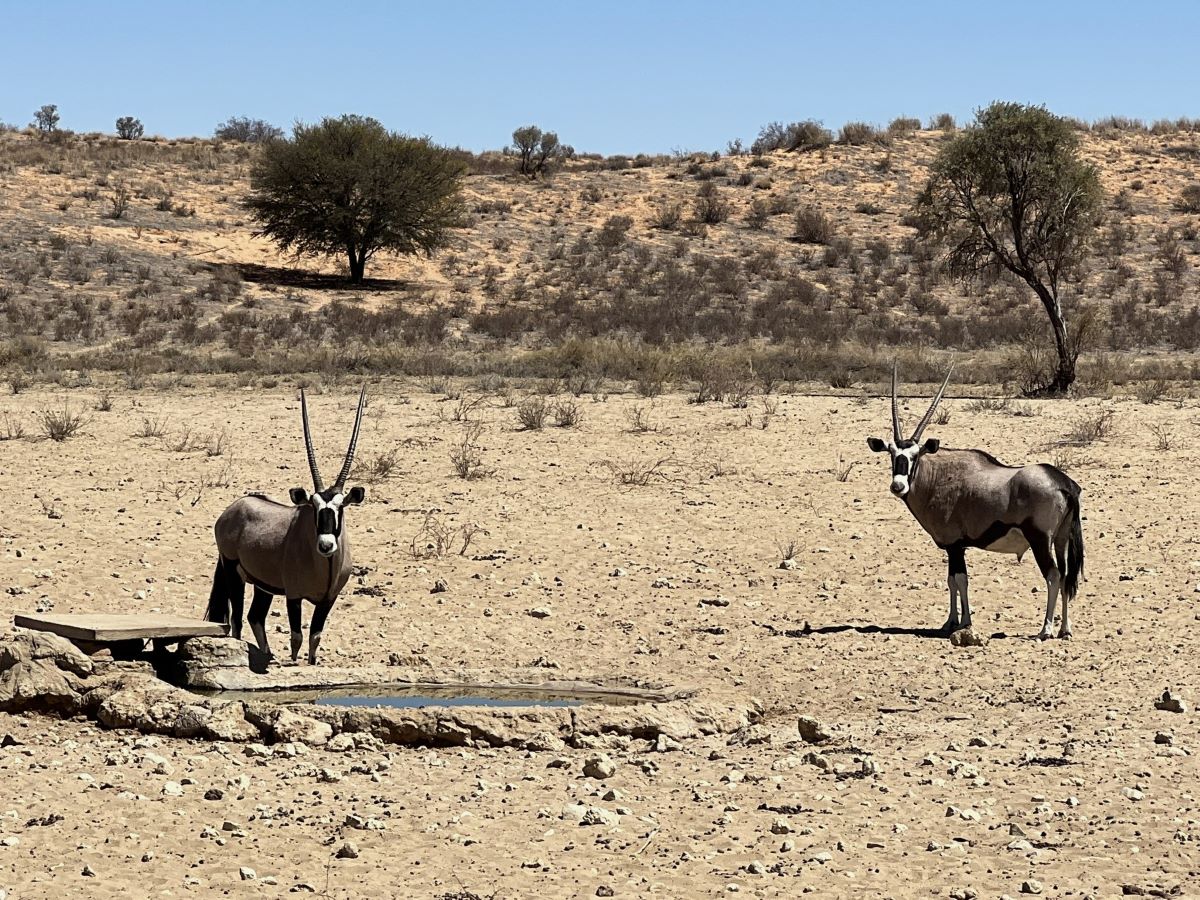
If you’re looking for a unique and less-crowded African safari destination, Kgalagadi Transfrontier Park should be at the top of your list. Straddling the border between South Africa and Botswana, this vast park is nearly double the size of Kruger and offers a raw, unspoiled wilderness that stretches over part of the Kalahari Desert. Its semi-arid landscape is dotted with red sand dunes and sparse vegetation, creating a stunning contrast to the more lush safari parks found throughout Africa.
What sets Kgalagadi apart is its remarkable abundance of wildlife in a harsh environment. You’ll encounter a variety of desert-adapted species, including oryx, springbok, gemsbok, eland, honey badgers, ostrich, and meerkats.
While it’s not home to all of the Big Five (you won’t find elephants, rhino, or cape buffalo here) but it more than makes up for it with its predator sightings, especially the majestic black-maned Kalahari lions. Cheetah and leopard sightings are also common, making this a dream destination for big cat lovers. The park is also a top spot for birdwatchers, with over 280 recorded species, including birds of prey like the tawny eagle.
Join a guided sunrise game drive, walking safaris, or thrilling night drives where you can spot nocturnal animals like porcupines, jackals, and owls. If you’re driving yourself, you can also take your own vehicle through the park.
The best time to visit Kgalagadi is during the dry season (May to September), when wildlife gathers around waterholes, making it easier to spot animals. The cooler weather also makes the experience more comfortable, allowing you to fully enjoy the beauty and wildlife of this hidden gem in Africa.
While you can stay within Kgalagadi, the accommodations are rustic and include camping and basic lodges. Instead, opt to stay at Kgalagadi Lifestyle Lodge located just 5 km from the gate of the park complete with a pool, bar, marketplace, and restaurant. Each individual chalet has a kitchen and beautiful views over the Kalahari Desert.
Accommodation: Kgalagadi Lifestyle Lodge Choose from family, luxury, standard and business chalets, or a 4-star campsite.
____________________________________________________________________________________________
Best Places To Go On Safari In Namibia
Etosha National Park: Home To The Famous Okaukuejo Waterhole
Recommended by Sydney Brown of Sydney Brown Travels
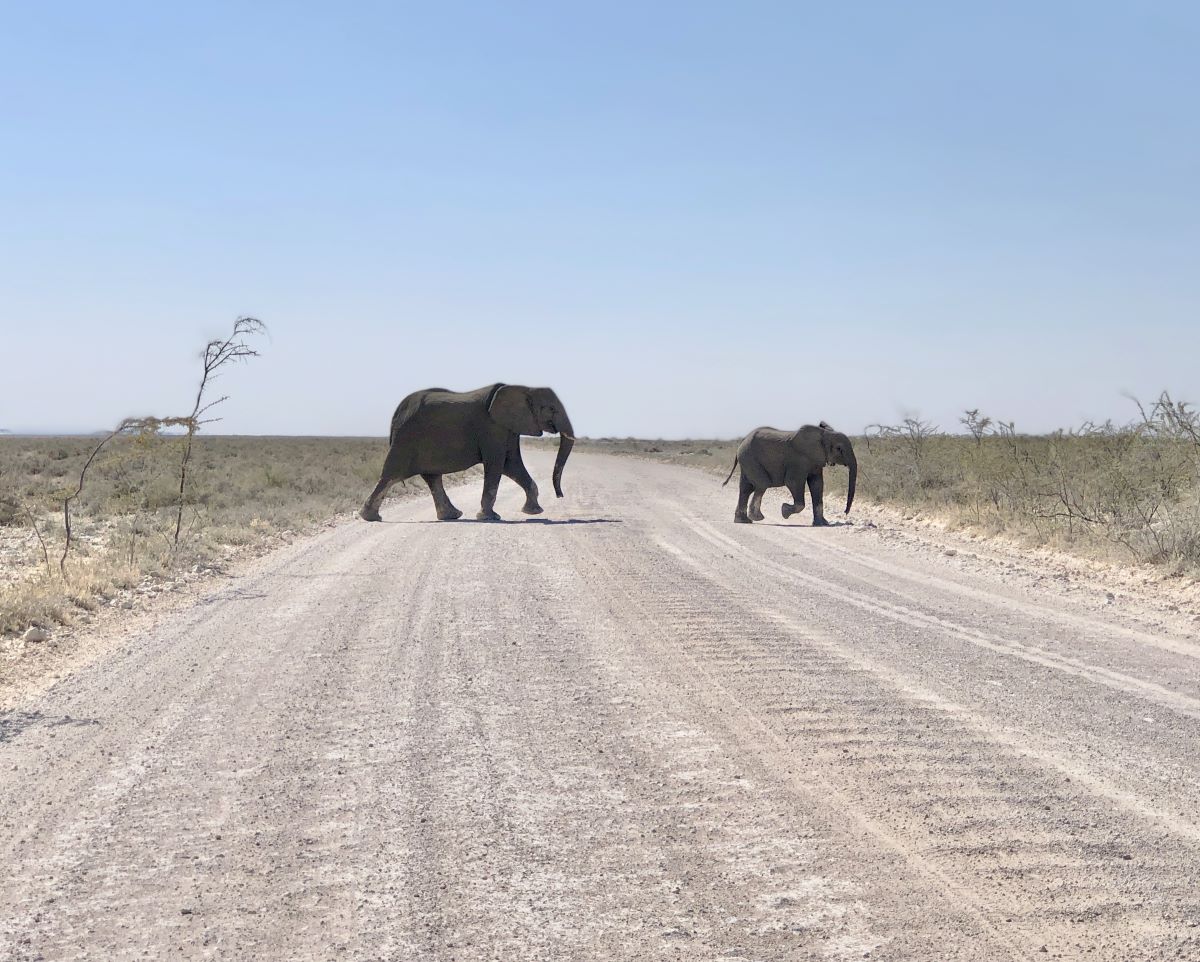
Etosha National Park, located in northern Namibia, is one of the best destinations for an African safari. The park itself spans over 8,500 square miles! While Etosha doesn’t have buffalos, the rest of the Big 5 wander around the park—lions, leopards, rhinos, and elephants all live in Etosha!
Etosha National Park is centered around the vast Etosha salt pan. The watering holes around the Etosha salt pan draw animals in masses, like elephants, zebras, giraffes and more.
The Okaukuejo waterhole is especially popular for its nighttime wildlife viewing during the dry season. The endangered black rhino, lions and elephants are frequent visitors.
One of my favorite experiences while on a safari trip around Etosha National Park was watching dozens of herds of elephants gather at a watering hole. It was truly one of the most memorable and majestic moments of my life.
One of the coolest things to do during a trip to Etosha is to take a guided night drive, where the park’s nocturnal animals—like leopards and owls—are active and wide awake.
A great time to visit Etosha National Park is during the dry season from May to October, as this is the best time of year to watch animals congregate at the watering holes!
Accommodation: Mushara Bush Camp: A down-to-earth tented bush camp experience. Evening campfires, a pool and playground make this a family-friendly destination.
____________________________________________________________________________________________
Onguma Nature Reserve: Where The Wild Things Are
Recommended by Ryan Chan of Wayless Travelers
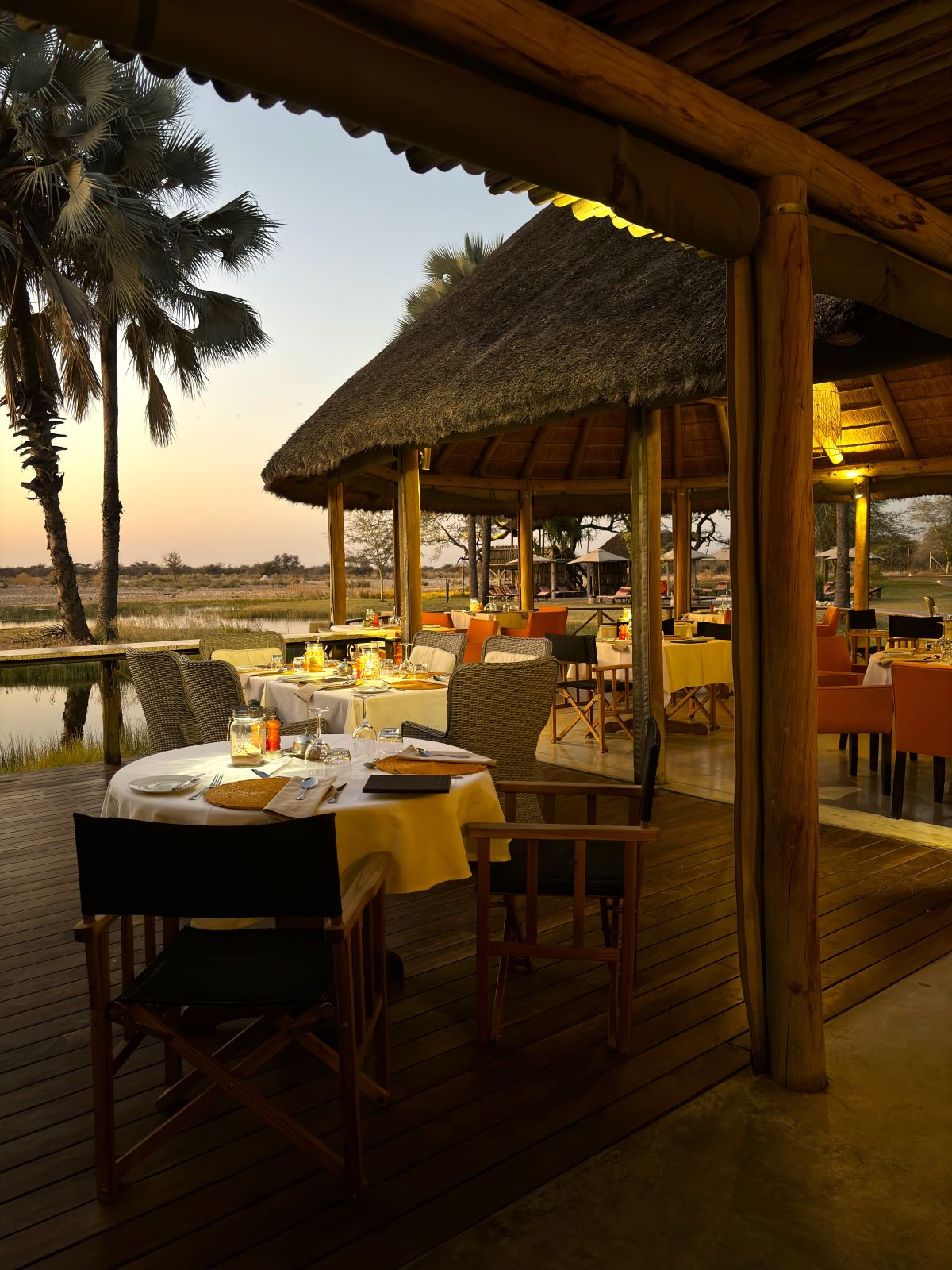
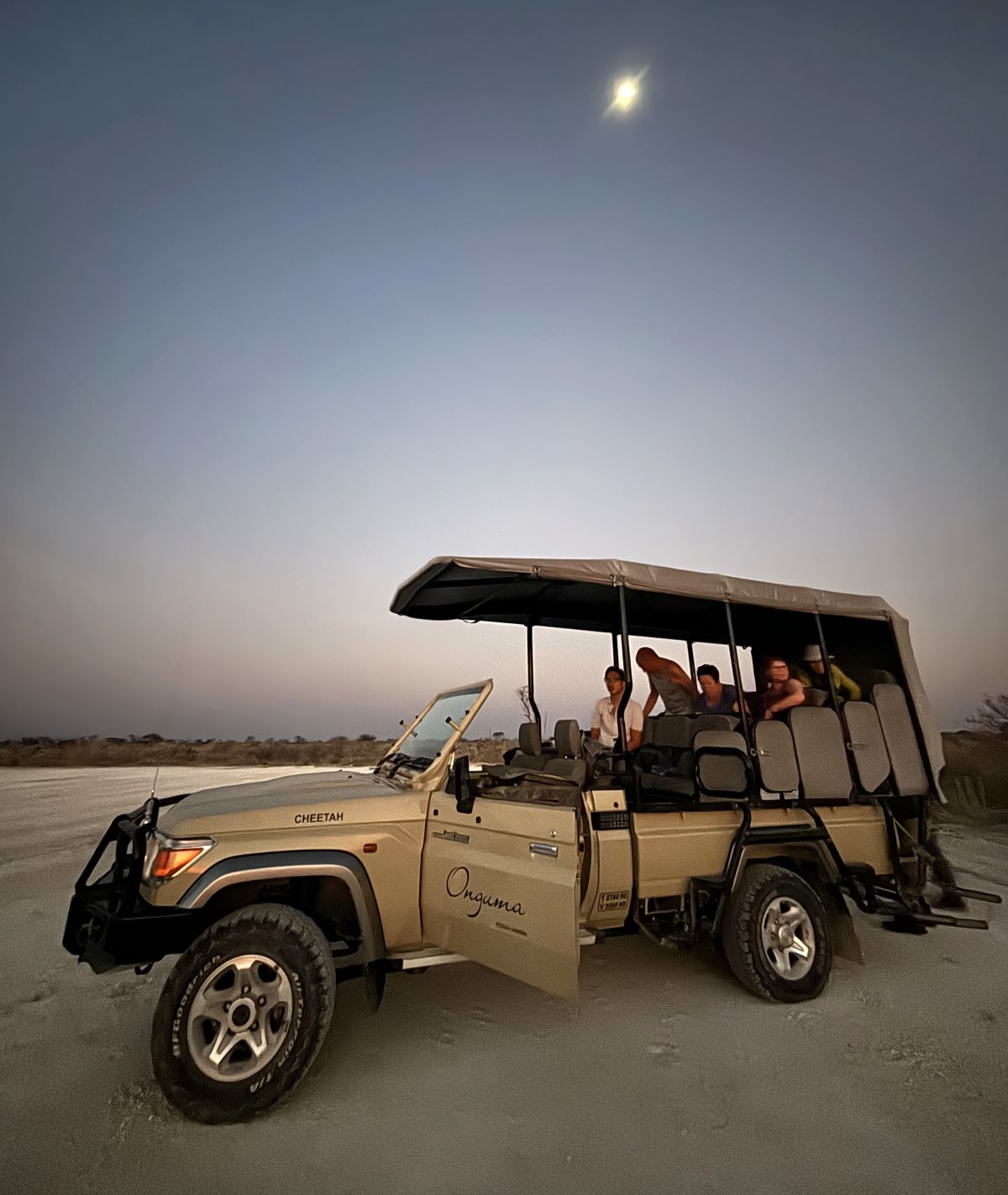
Beyond the incredible national parks like Sossusvlei, Spitzkoppe, and Etosha, one of the best experiences we had in Namibia was visiting the Onguma lodge. Located on the eastern border of Etosha, Onguma is a private game reserve that offers some of the best game viewing in a tranquil and romantic setting.
Beyond the sunrise drives and sundowners, you can book an adventurous sleep-out where you spend the night in the wild game reserve on top of their custom built dream cruiser. This double-decker vehicle features a full bathroom, open-air bedroom, and a terrace lounge where you can enjoy your dinner. This gives you an unparalleled opportunity to see the animals roaming all throughout the evening and night.
At Onguma, you will have the chance to see 4 out of the Big 5: lions, leopards, elephants and black rhinos. You’ll also have the chance to spot cheetahs and giraffes. The only member of the Big 5 missing is the buffalo.
Onguma’s game drives are conducted by some of the most passionate rangers we have met. A highlight of our stay was admiring a whole family of elephants walking right by us during our sundowner.
Onguma caters to all budgets offering a range of accommodations from campsites to full suites. We had the opportunity to stay at their campsite which was incredibly well equipped and were able to also use their common lounge area that had a pool.
If you will be heading to Namibia, we would recommend the dry season from June to October, when you will have the highest chance to witness the wildlife.
Accommodation: Onguma Bush Camp The lounge and dining room overlook a water hole for wildlife viewing around the clock. An ideal place for families with children.
____________________________________________________________________________________________
Best Places To Go On Safari In South Africa
Kruger National Park: The Largest Game Reserve in Africa
Recommended by Melinda Medley of Mel On The Go
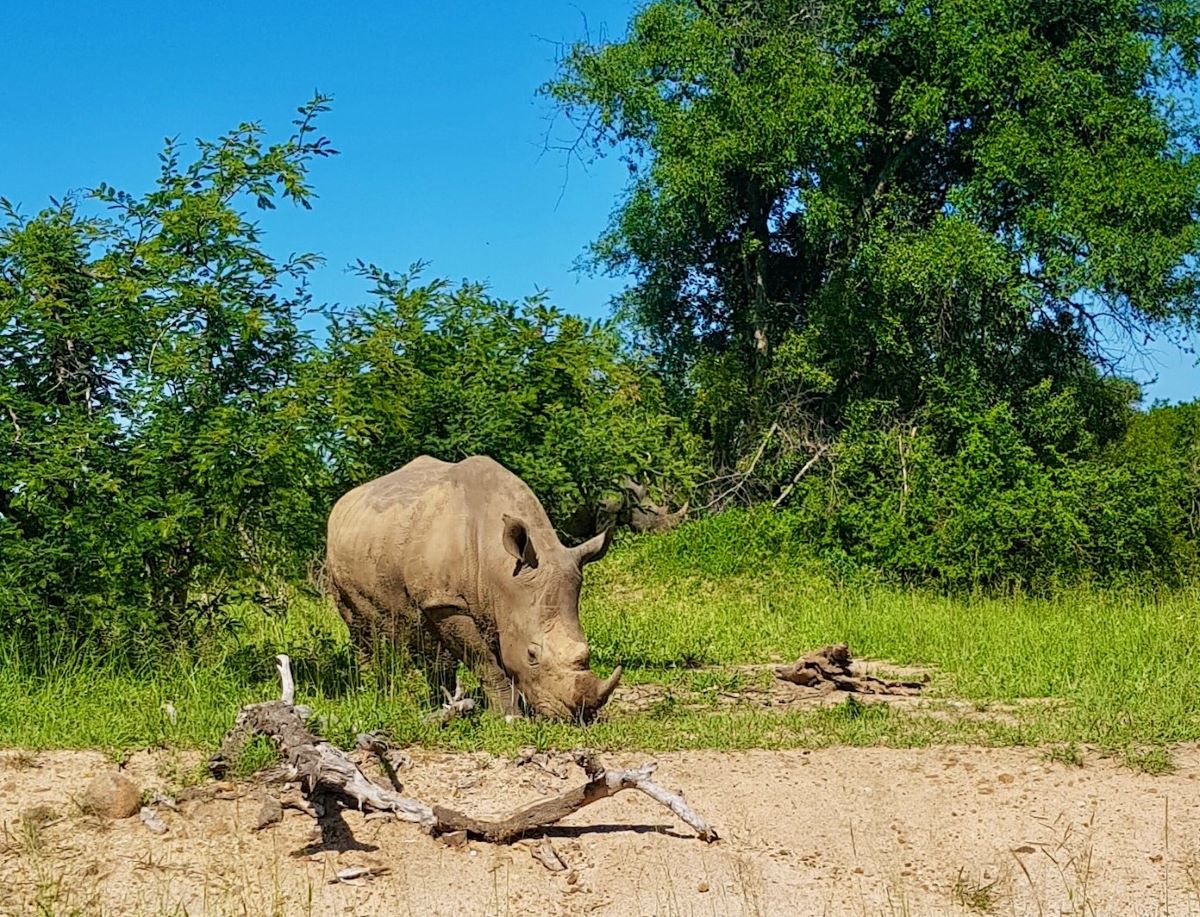
South Africans are justifiably proud of Kruger National Park. The national park and heritage site covers over 7,000 square miles of wilderness, including several sites of historic importance. Located in northeastern South Africa, Kruger is the most visited wildlife based national park in Africa.
Getting to Kruger usually involves a plane and a rental car, which you want for navigating the park. While Kruger has its own airport less than an hour away, international flights arrive in Johannesburg, a four hour drive from the park.
Most visitors bring their own car, and drive the park in search of wild animals. One of the park’s great resources is the map depicting recent animal sightings, posted in each rest camp.
Kruger is ideal for spotting The Big Five, including the elusive rhino. Kruger National Park is home to hundreds of mammals and birds, more large mammals than any other African game reserve.
SANParks, which run Kruger, offer a wide range of accommodations, from simple campsites to luxe lodges. Each rest camp features unique amenities, like guided tours, communal barbecues, and swimming pools.
We found it fun to move to a new camp every day and enjoy the varied environments each night. We loved our night in a river front cottage in Shimuwini Bushveld, using the outdoor space to watch animals at their water source.
Take the opportunity to sign up for a guided night time game drive, where experts lead the way. In Kruger at night you’ll admire the stars in the dark sky while spotting nocturnal creatures in their native environment.
Accommodation: Rhino Post Safari Lodge This is a small safari lodge with eight luxury tented suites. Each suite has large glass windows and a private deck.
____________________________________________________________________________________________
Amakhala Game Reserve: A Unique Conservation Initiative
Recommended by Jane Geffin of The Family Conscience
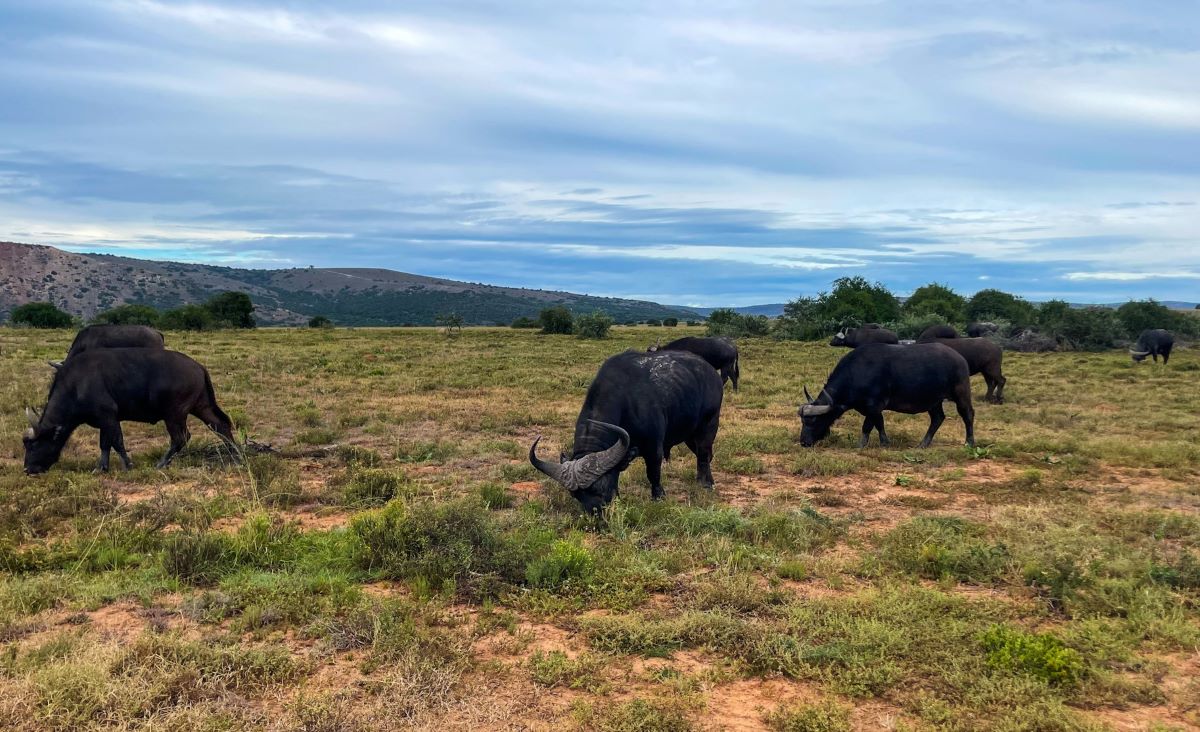
Amakhala Game Reserve, on the Eastern Cape of South Africa, helps communities convert agricultural land for conservation purposes. They are dedicated to countering the ever-present threat of criminal rhino poaching
As a family of 4, we chose to visit Amakhala as it’s relatively budget-friendly (compared to some), great for people travelling with kids and teens (kids under 12 stay free) and, most importantly, offers access to the Big Five.
We enjoyed two game drives a day – one bright and early at 6.30 am, the other in the late afternoon. Night drives and bush walks are also available. All meals plus snacks while out on game drives are provided.
Amakhala is a perfect first-timer safari option since you have the opportunity to see a range of animals here. We saw elephants, giraffes, rhinos, African buffalo, cheetahs, lions (from some distance; the binoculars came in handy), hippos, antelope and many more animals. Since leopards are a little more shy, we missed out on this sighting. However, we felt we saw and experienced more than enough wildlife.
The guides at Amakhala are amazing and particularly fantastic with kids. Our guide let my daughter sit up front and decide where we should head and what we should search for next. The guides go out of their way to ensure you see as much as you can and make your experience the best it can be. As this was our first African safari, we were immensely appreciative of this.
We visited in early April and the weather was mixed. It starts to get a little chilly over the months of May, June and July. September and October are good times to visit if you’re able.
We stayed at Amakhala at the end of our Garden Route drive. This route extends from Cape Town to Knysna. It was an unforgettable experience for our whole family, with plenty of kid-friendly activities along the way!
Accommodation: Hlosi Game Lodge A peaceful location with great views of a waterhole right by the restaurant, regularly frequented by hippos and elephants. Choose from a luxury safari tent, a one-bedroom suite for a romantic safari experience or a two-bedroom family suite.
____________________________________________________________________________________________
Karongwe Private Game Reserve: A Big Five Wildlife Sanctuary
Recommended by Rebecca Gade-Sawicki of Veggies Abroad
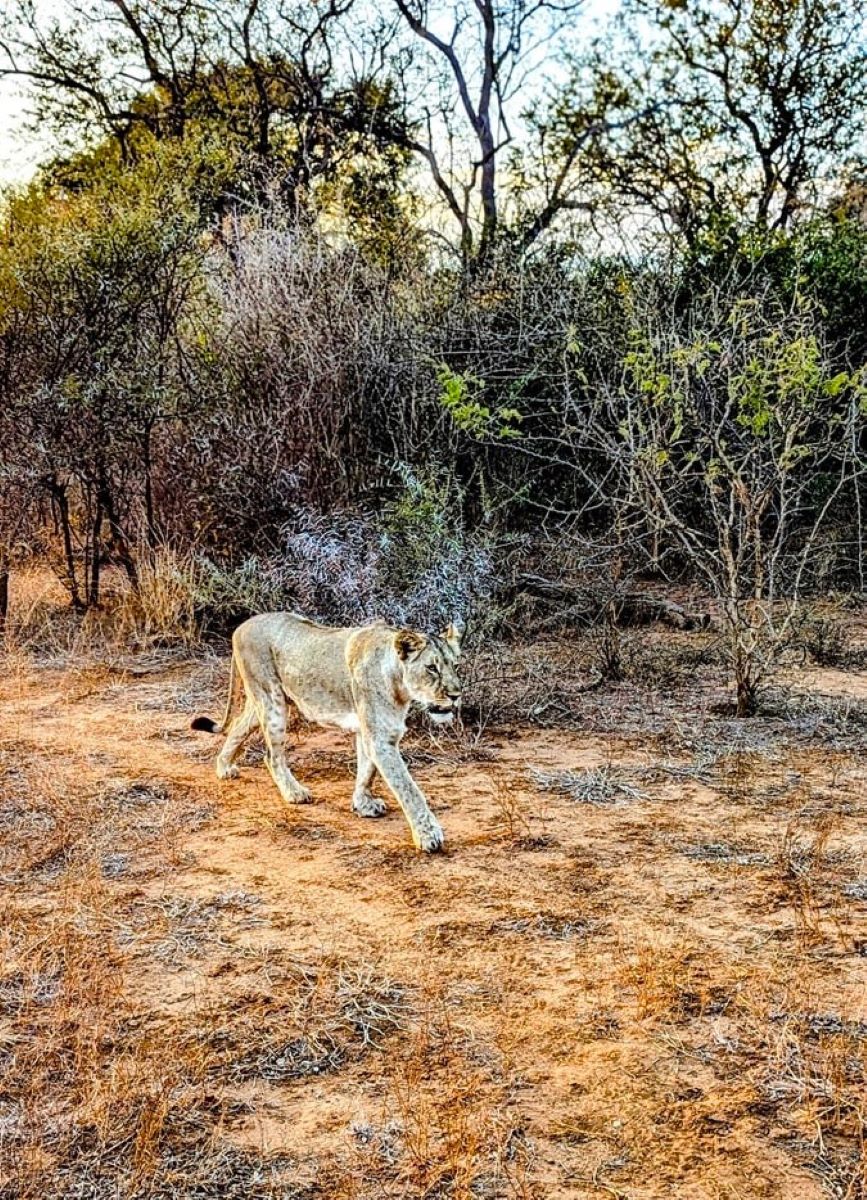
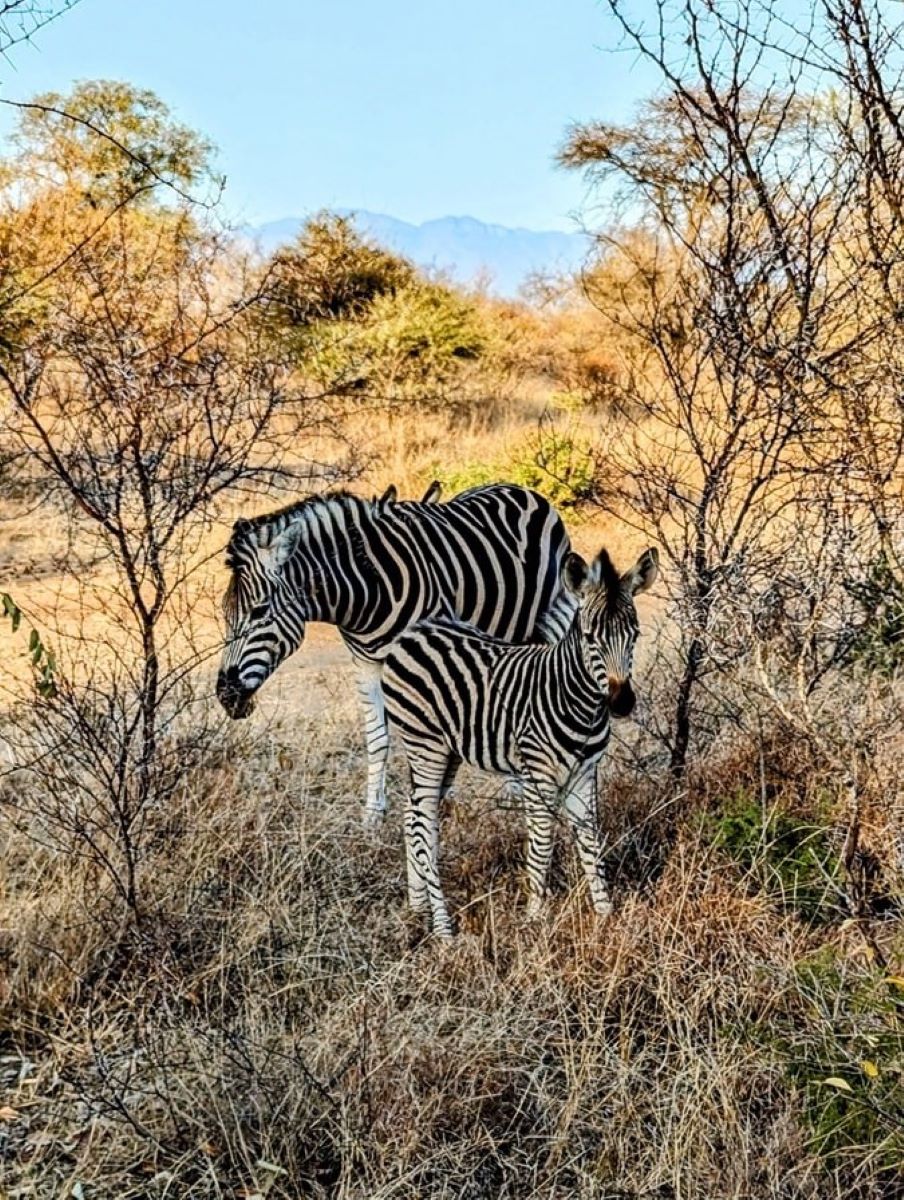
Karongwe Private Reserve is located in the Limpopo Province of South Africa and offers an unforgettable experience for nature lovers and safari enthusiasts alike. What sets this reserve apart is its commitment to conservation and the intimate wildlife experiences it provides, away from the crowds of larger national parks.
One of the most memorable aspects of Karongwe is the diversity of animals that call it home and the opportunity to learn about certain species and how the reserve protects them. While the reserve doesn’t exclusively focus on the Big Five, there are opportunities to spot various animals like lions, elephants, leopards, zebras, and more.
One thing to keep in mind is that there are no guarantees about what you will see. The reserve operates ethically, and the animals are allowed to be wild.
In addition to plenty of safari time, you can also go on a walking safari and get a close-up view of the flora and fauna that make this area special. In addition to that, make sure you take time to sit in on a talk or go for a walk with a member of the reserve’s anti-poaching team. Their work is integral for wildlife protection and offers a different perspective on safaris.
It’s best to visit during the dry season, from May to September for optimal wildlife viewing and temperate weather. During this period, the foliage and brush are bare, making it easier to spot wildlife, while the cooler temperatures create comfortable conditions for both game drives and walking safaris.
Each lodge features excellent views of the surrounding wilderness, and if you’re lucky, you might also see elephants and other animals passing through the camp. The dining options are also terrific, and the camp can accommodate vegan and gluten-free requests.
Accommodation: Karongwe Portfolio – Kuname Lodge Guests stay in individual villas with an enclosed garden and outside shower. There are plenty of opportunities to spot wildlife right from the lodge.
____________________________________________________________________________________________
Wrap-Up
And there you have it: the best places to go on safari in Africa according to travel bloggers who’ve been there. Let these expert recommendations guide you as you plan your dream safari.
Then pack your bags, grab your camera, and prepare for the journey of a lifetime. Happy travels!
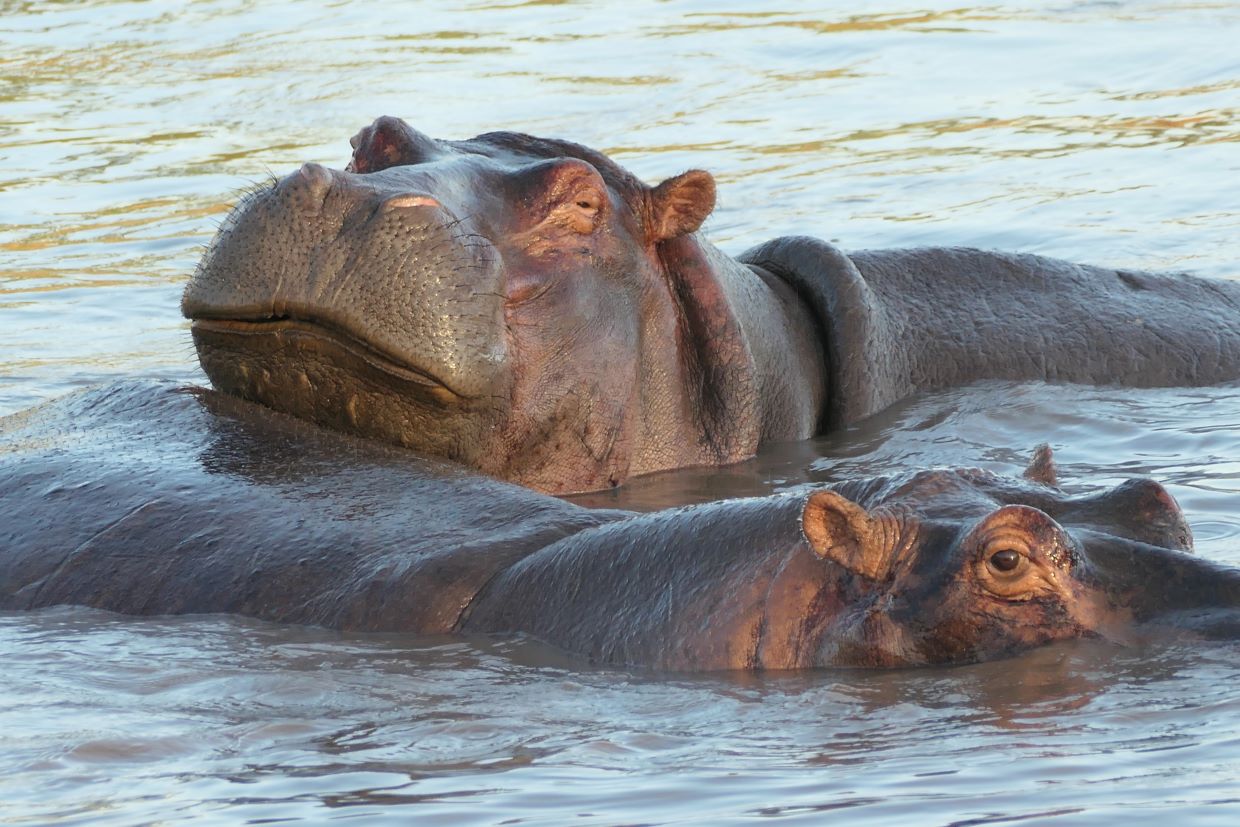
Planning A Trip? Use Our Favorite Resources!
These are sites that I use when booking a trip. If you book through my links, I may earn a commission at no extra cost to you. Thanks for supporting On To New Adventures!
Accommodations: We recommend using booking.com
Flights: We recommend WayAway
Tours And Experiences: We recommend Viator
Looking for more travel resources? Check out our Travel Resources page
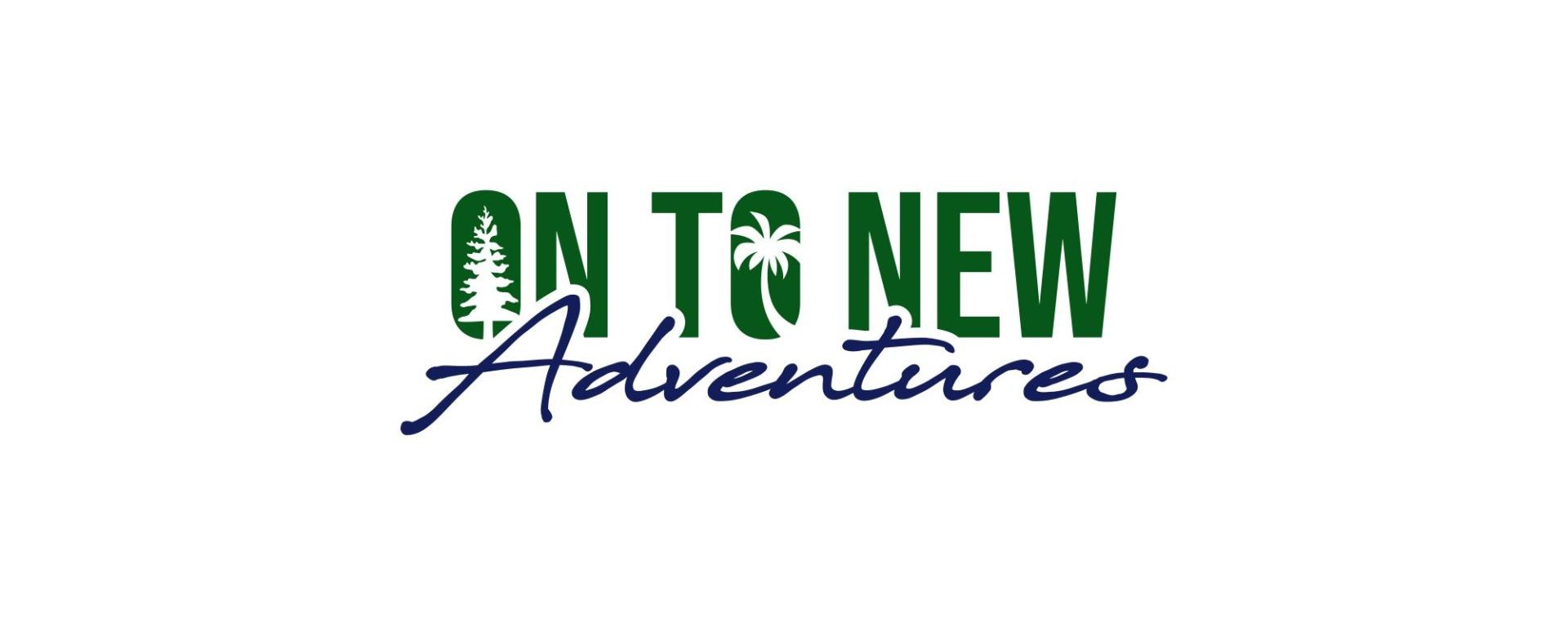
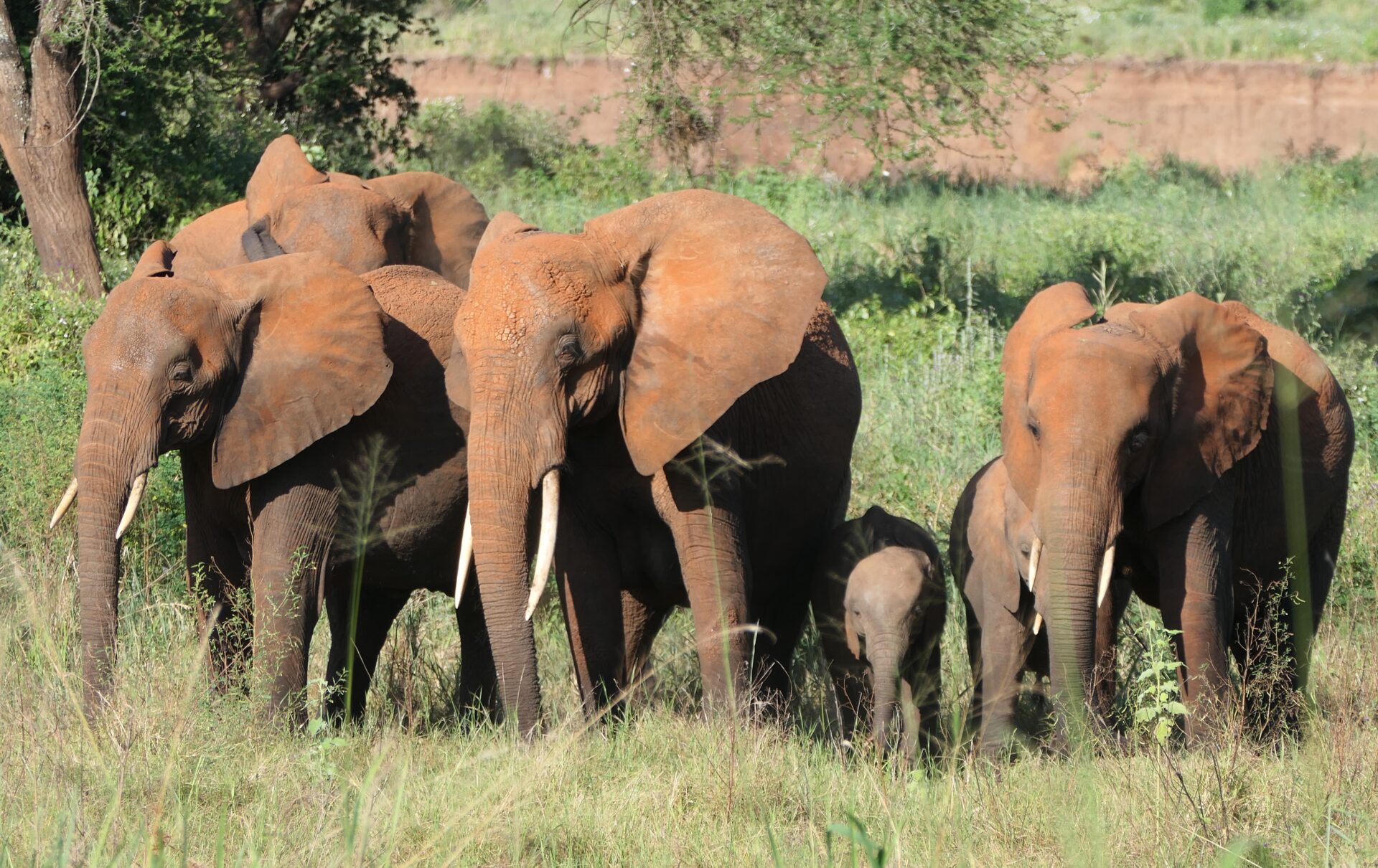
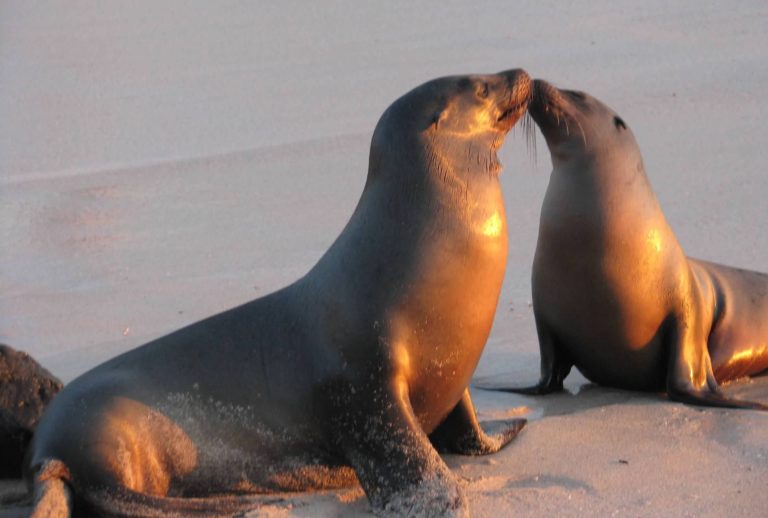
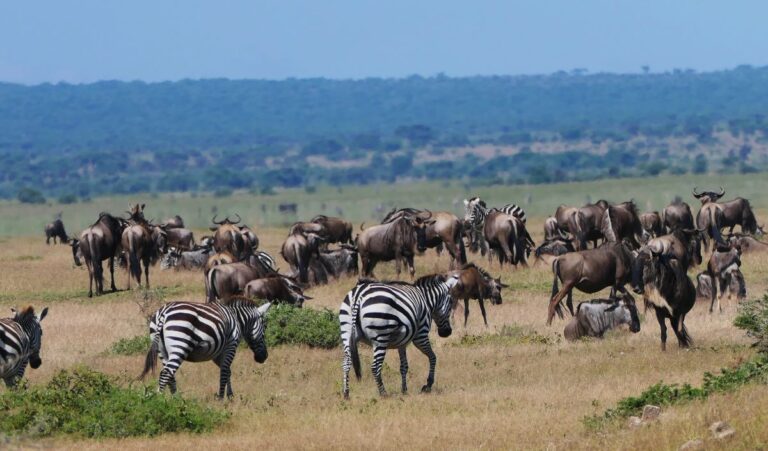
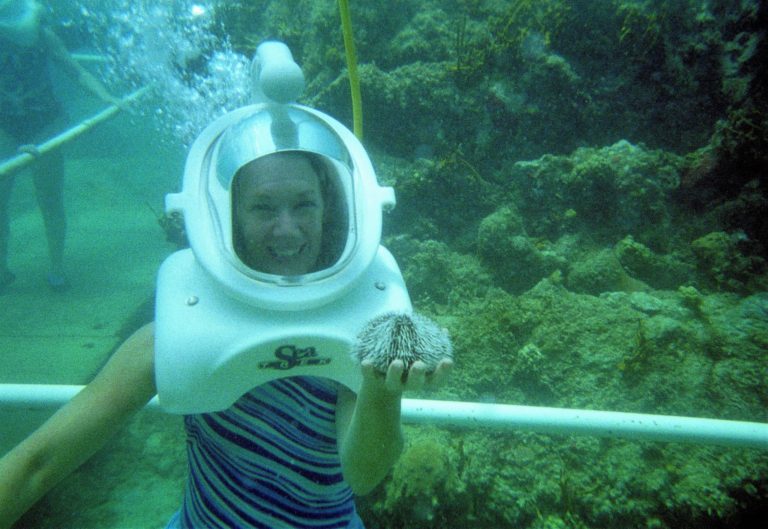
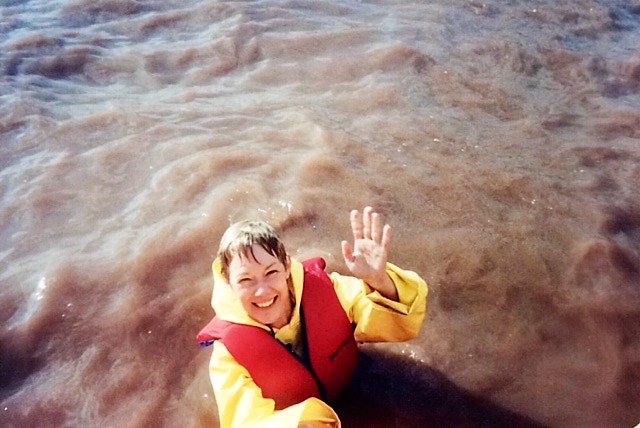
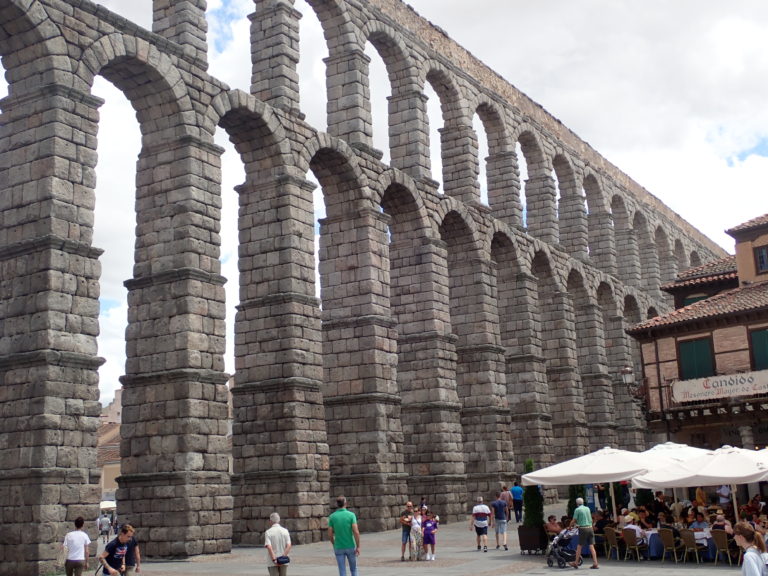
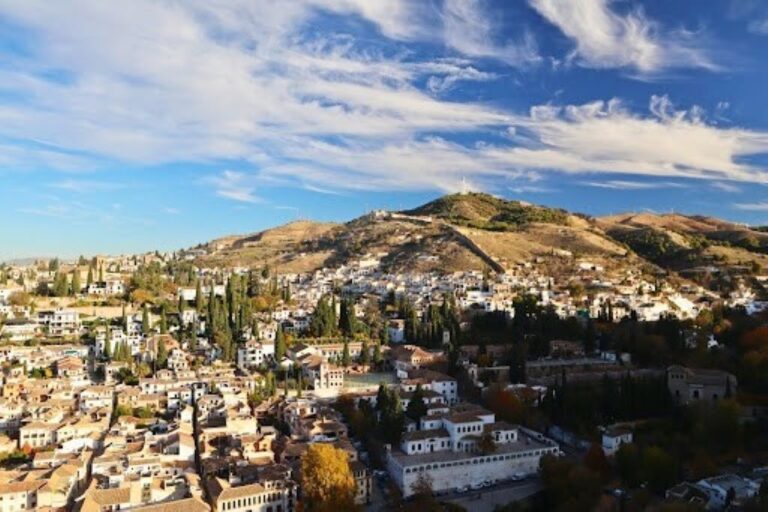
Gorgeous pictures and great information! Thanks Linda.
Hey Cindy, Thanks for checking out my blog!
There are so many great places to see wildlife in Africa! I have added all these to my Bucket List. Thanks for this great resource!!
The more I talk to other travelers, the more my bucket list grows! I’ve added Uganda to my list: I’d love to check out Murchison Falls National Park and do a gorilla trek!
So many fantastic places to go on an African safari, it’s so hard to pick where to go! This has given me more ideas to get back to Africa. Once you go – you’re hooked!
I couldn’t agree more! We went on safari in Tanzania a few months ago: now looking ahead to Kenya or South Africa!
Excellent presentation.
Thank you so much for checking out my new blog post!
I have never been on a safari yet, but I am willing to go in the coming years. Thank you for your information!
Going on an African safari has been on my bucket list for years! Now that we’ve actually done it, it turns out it’s not just a matter of crossing it off of the list. Now we want to go again!